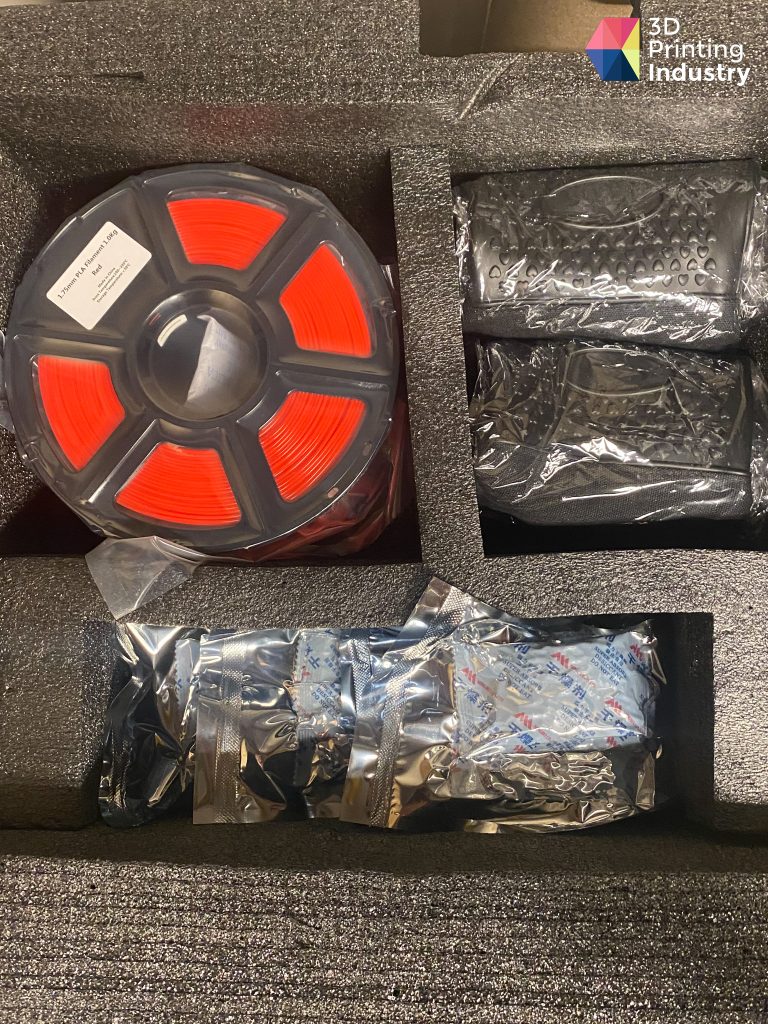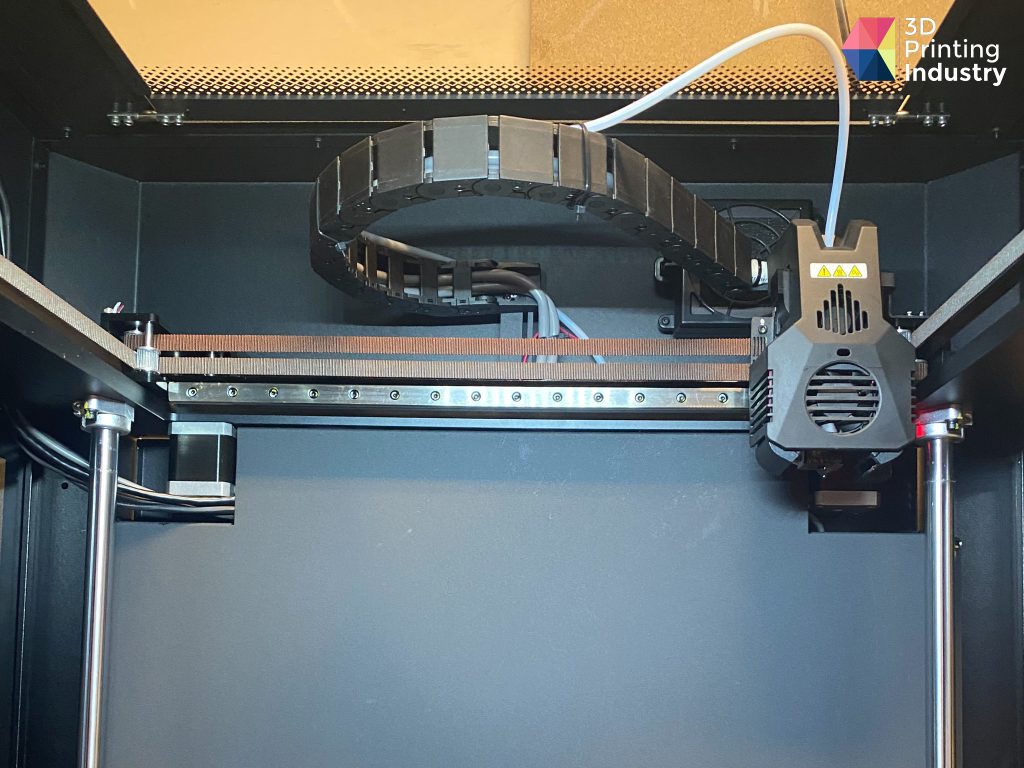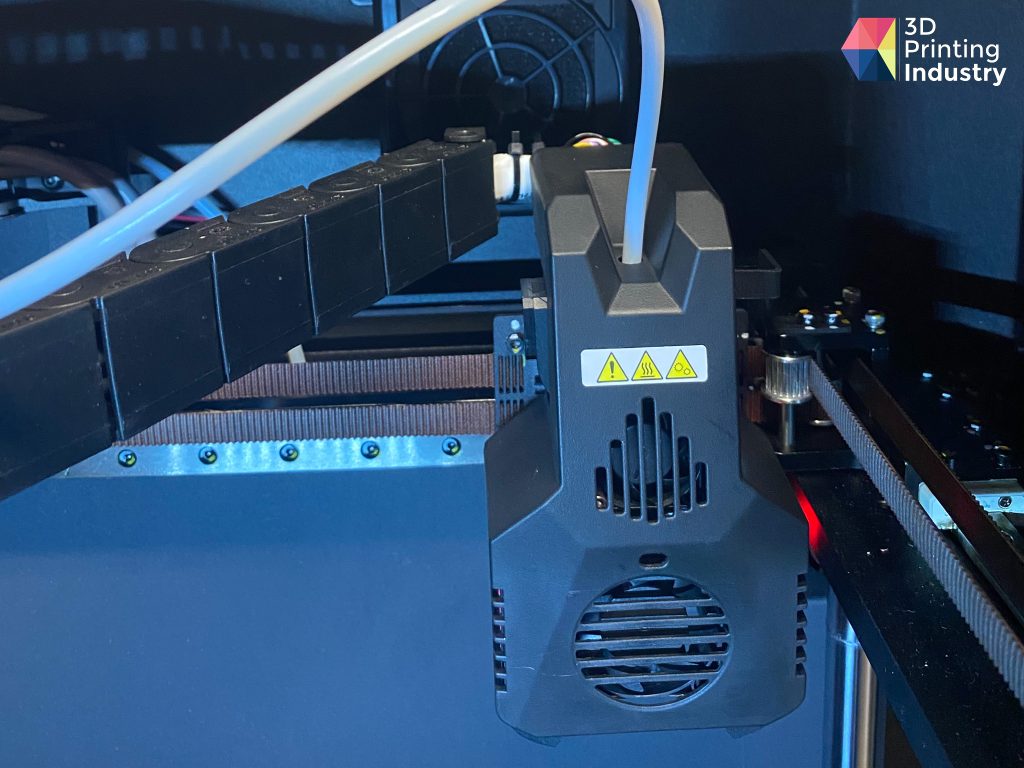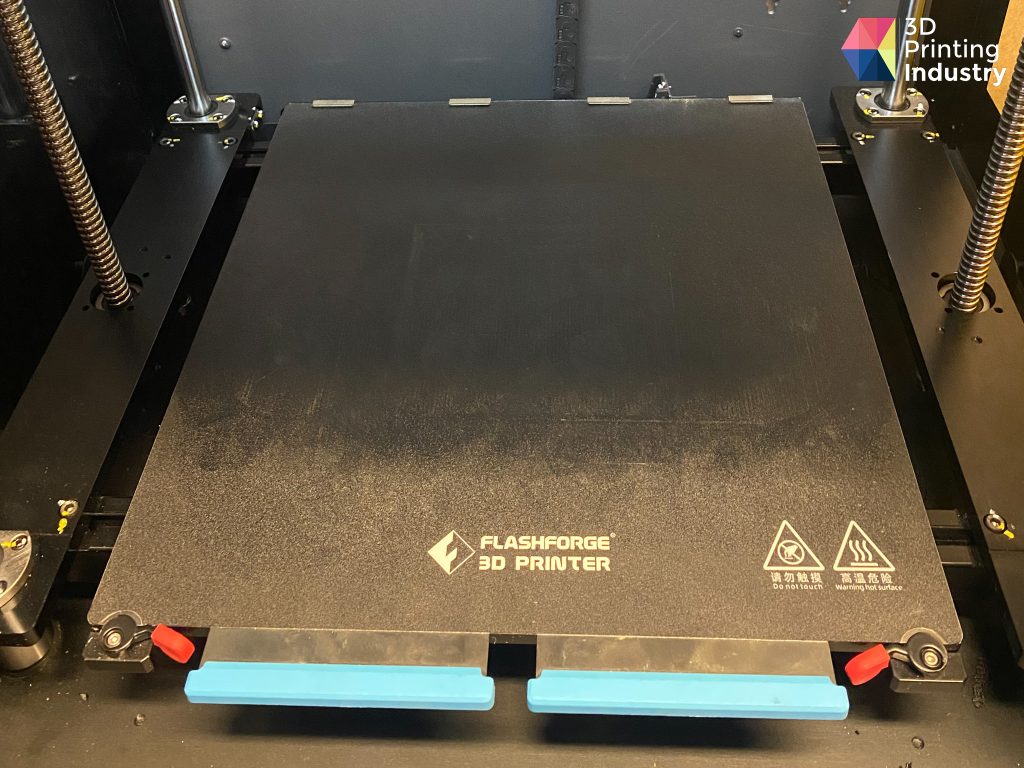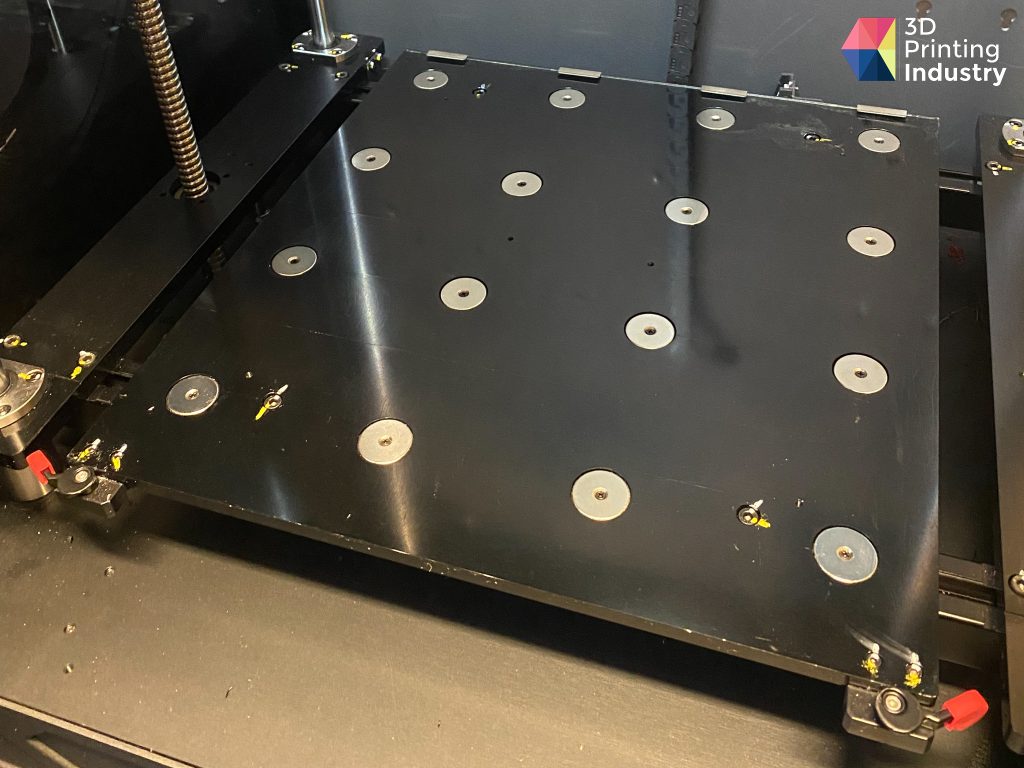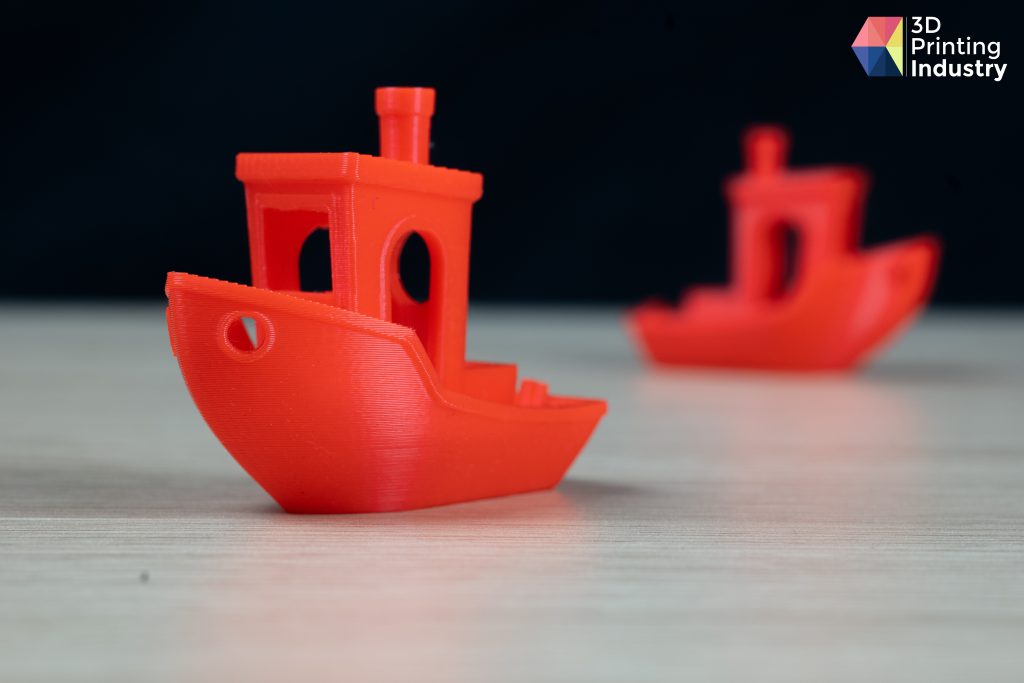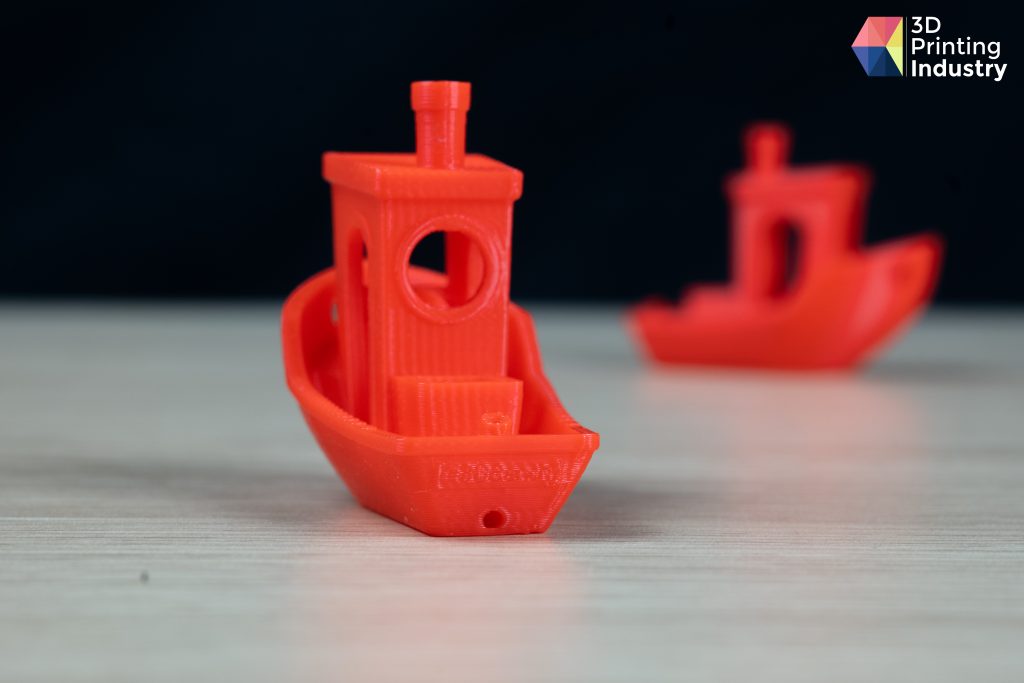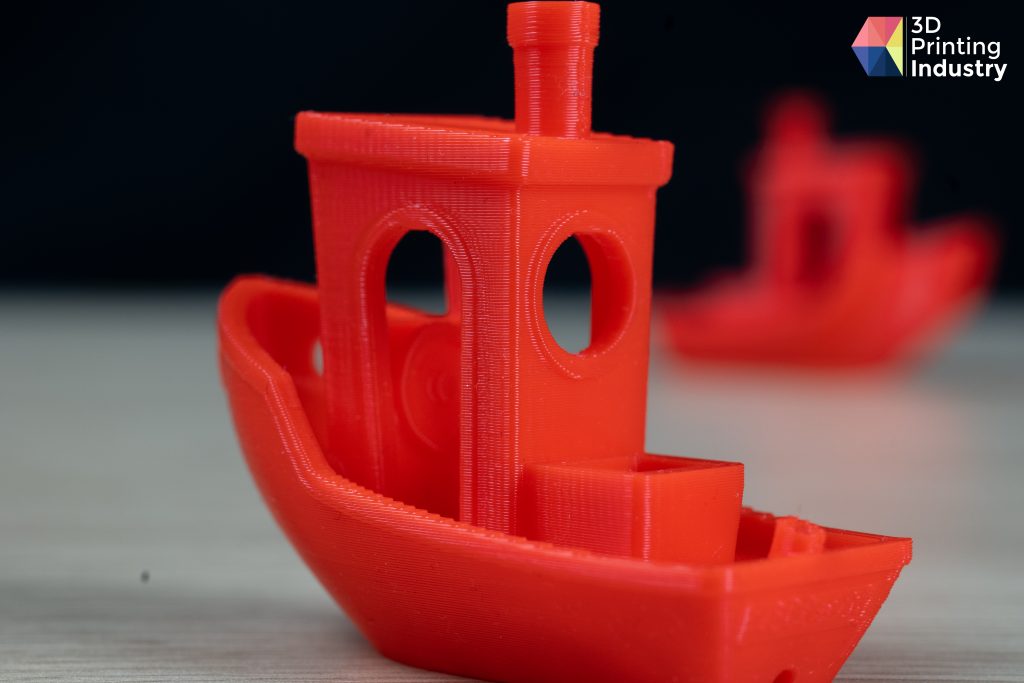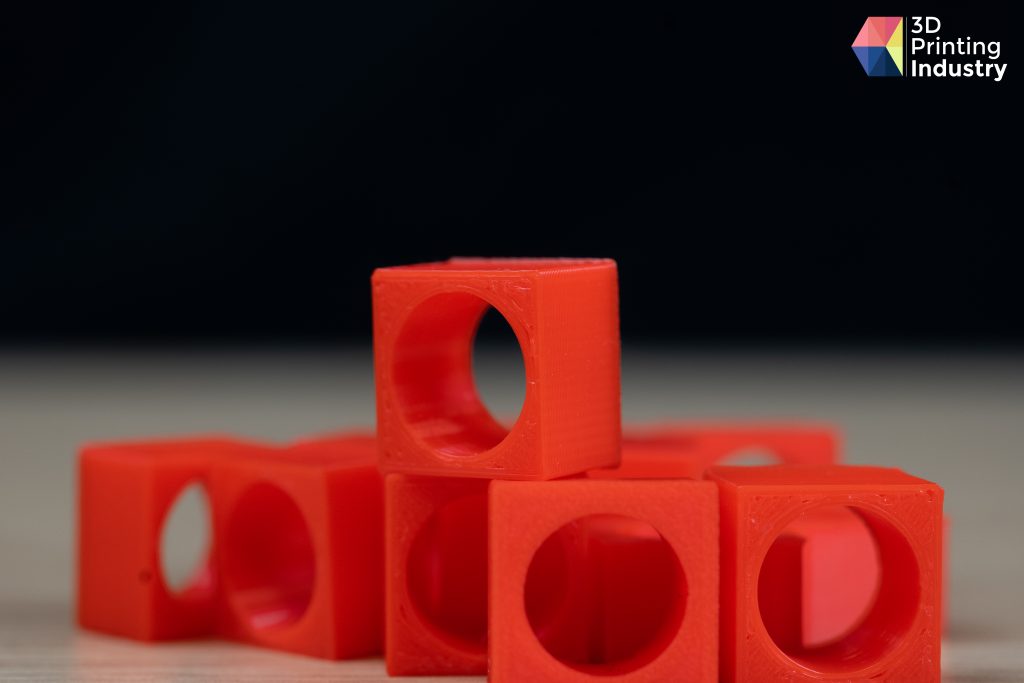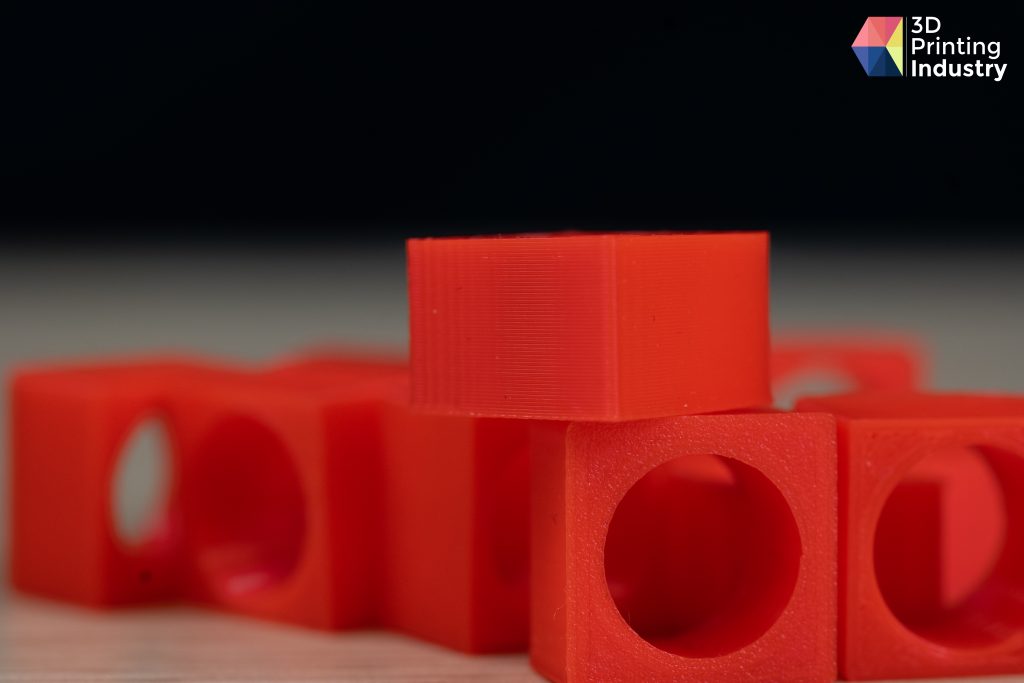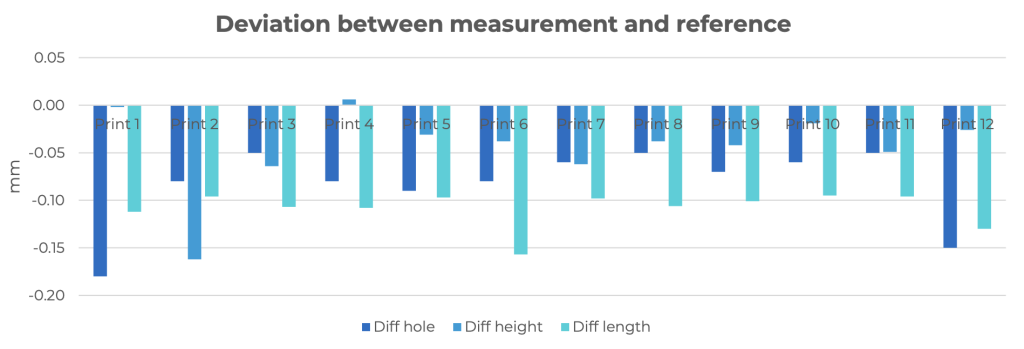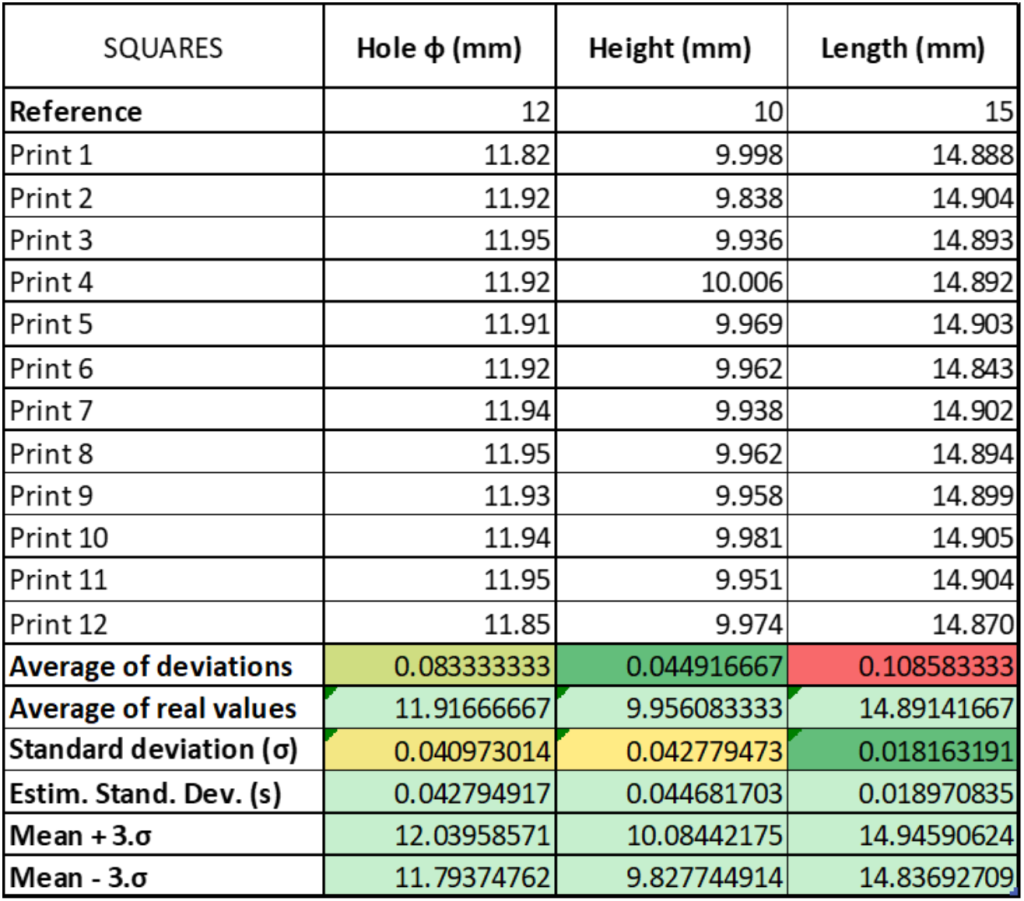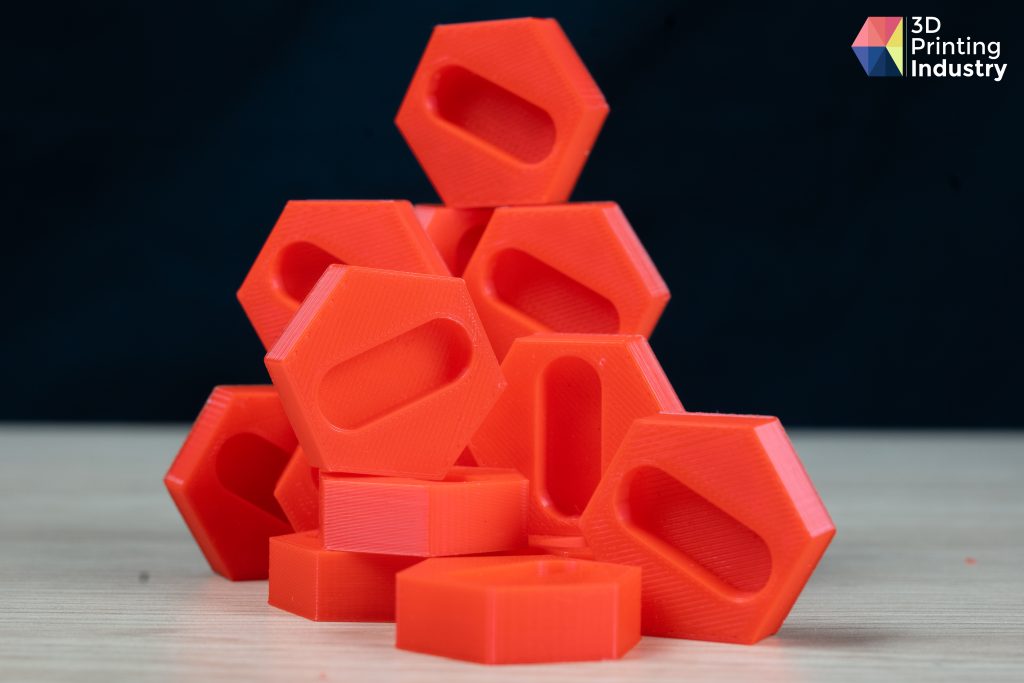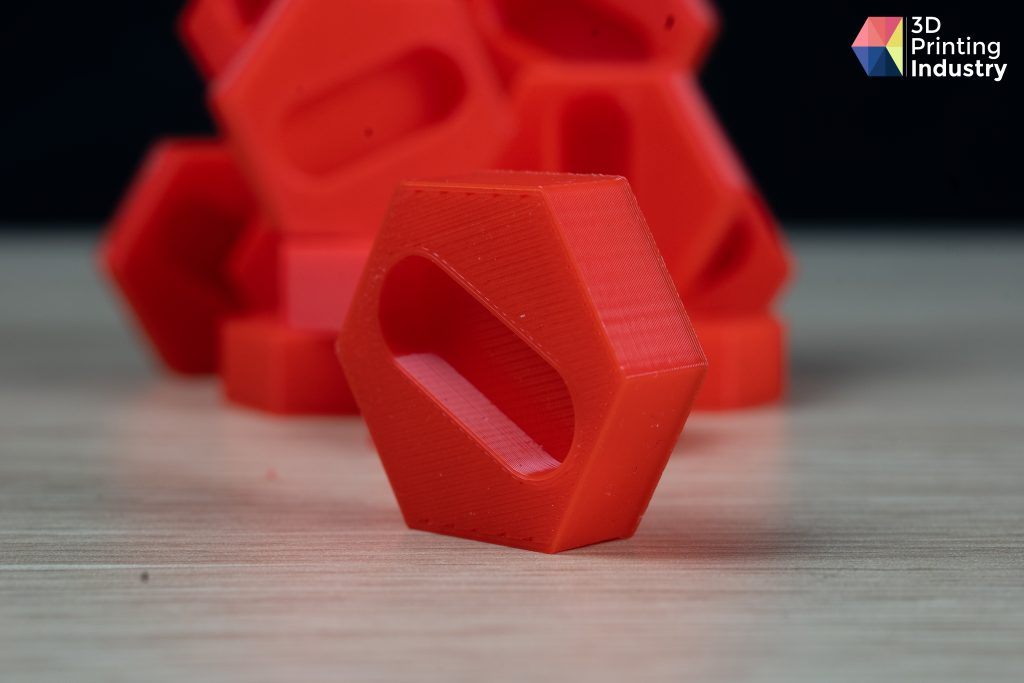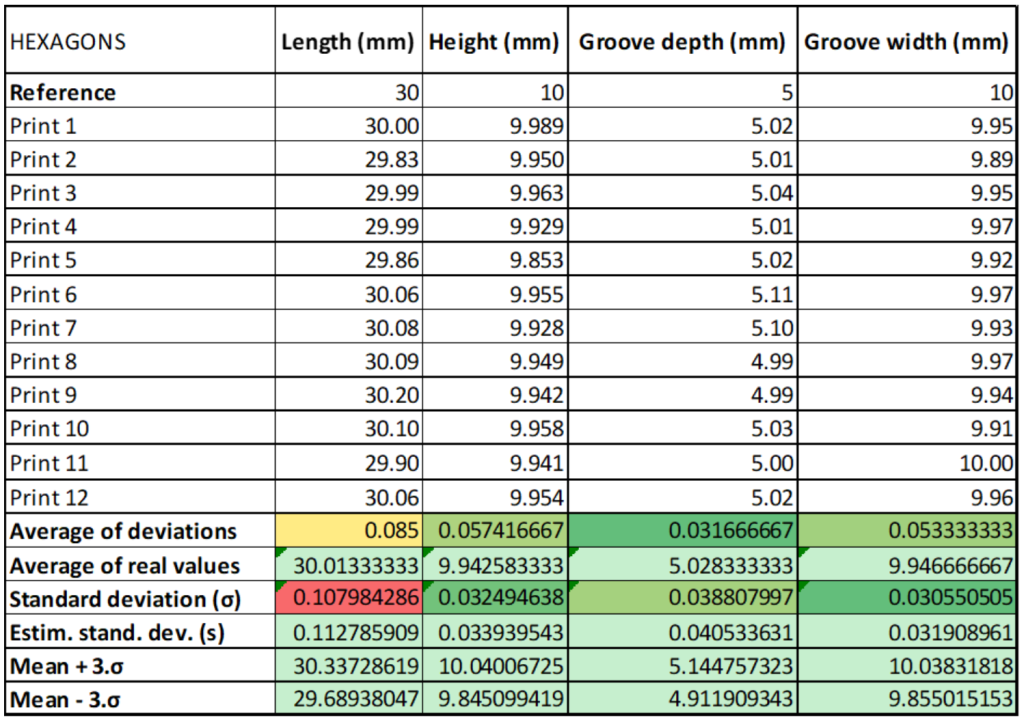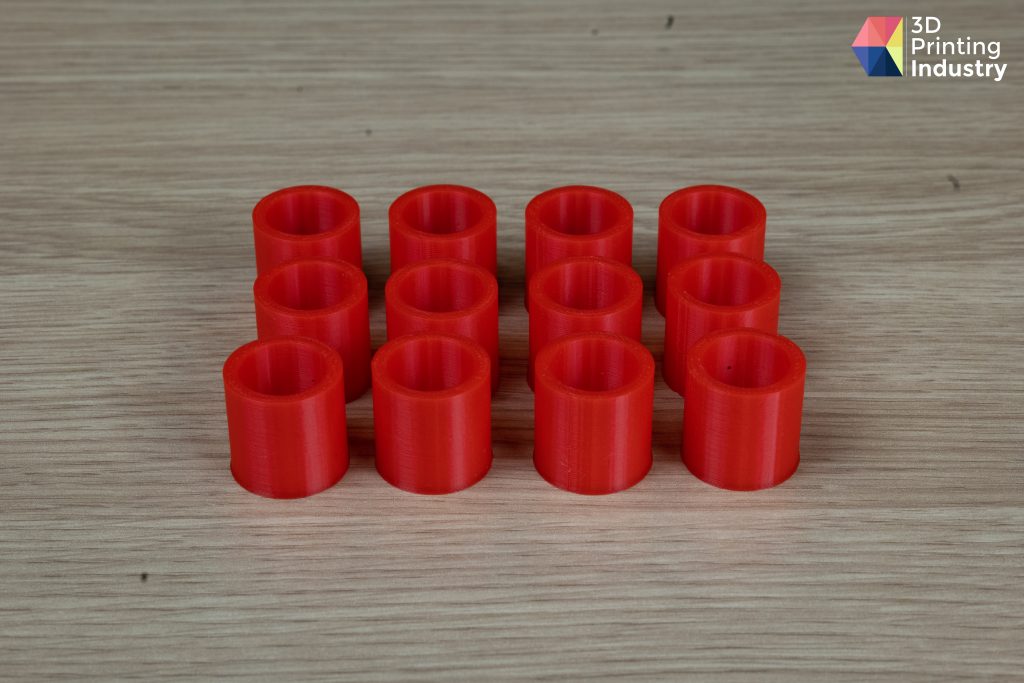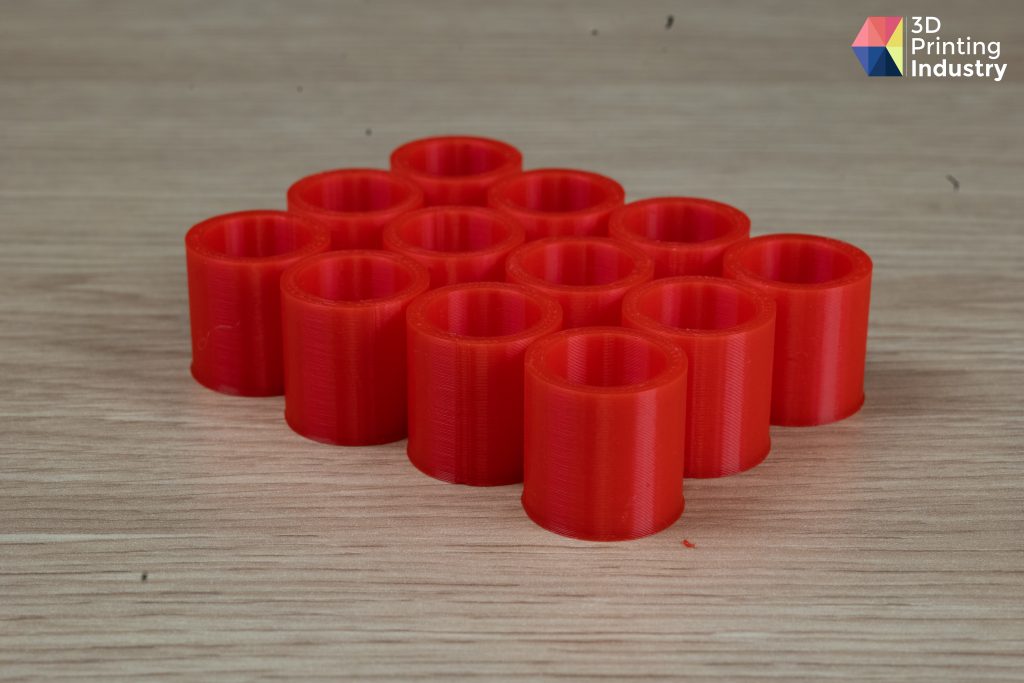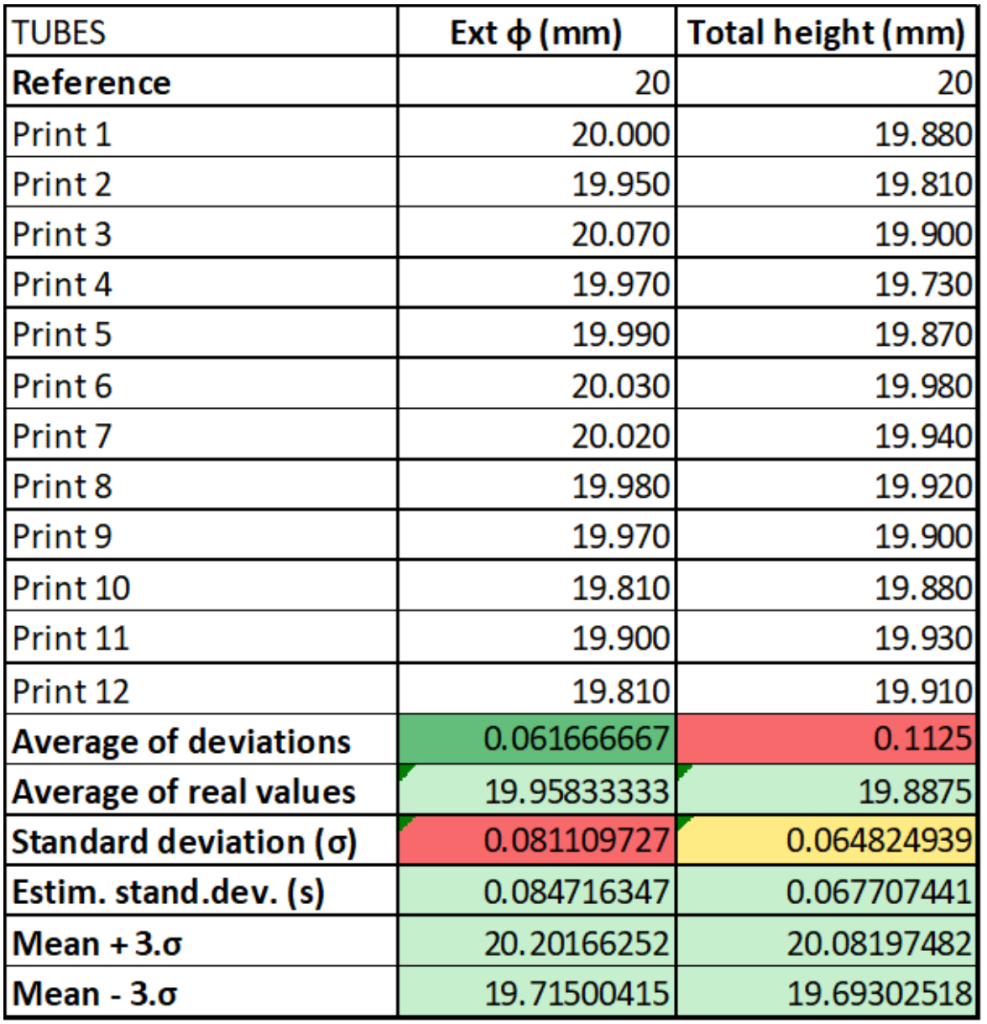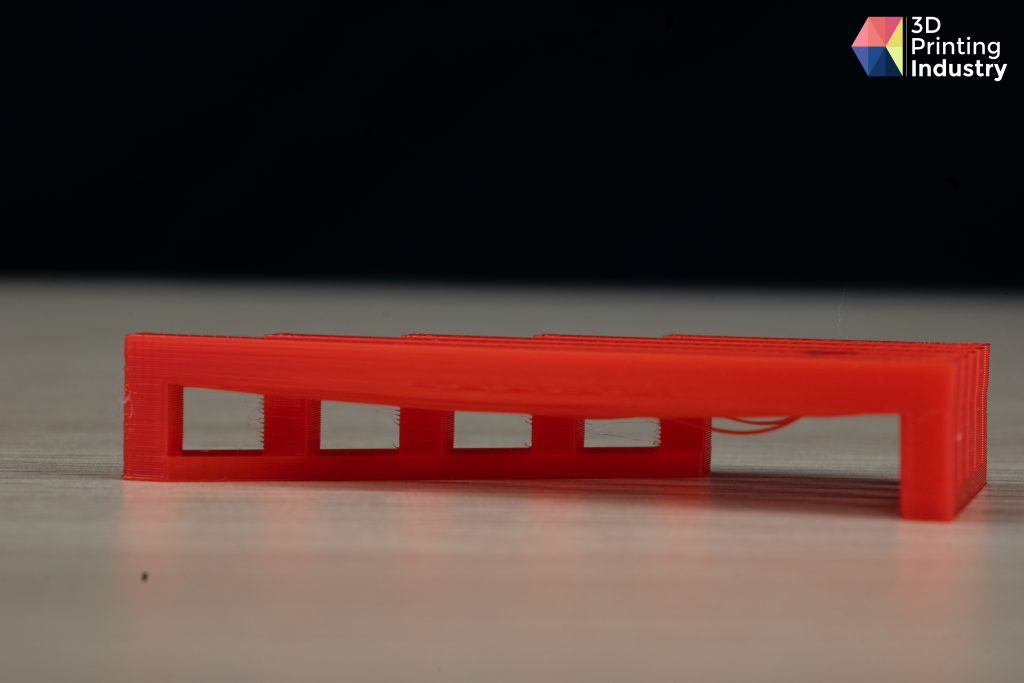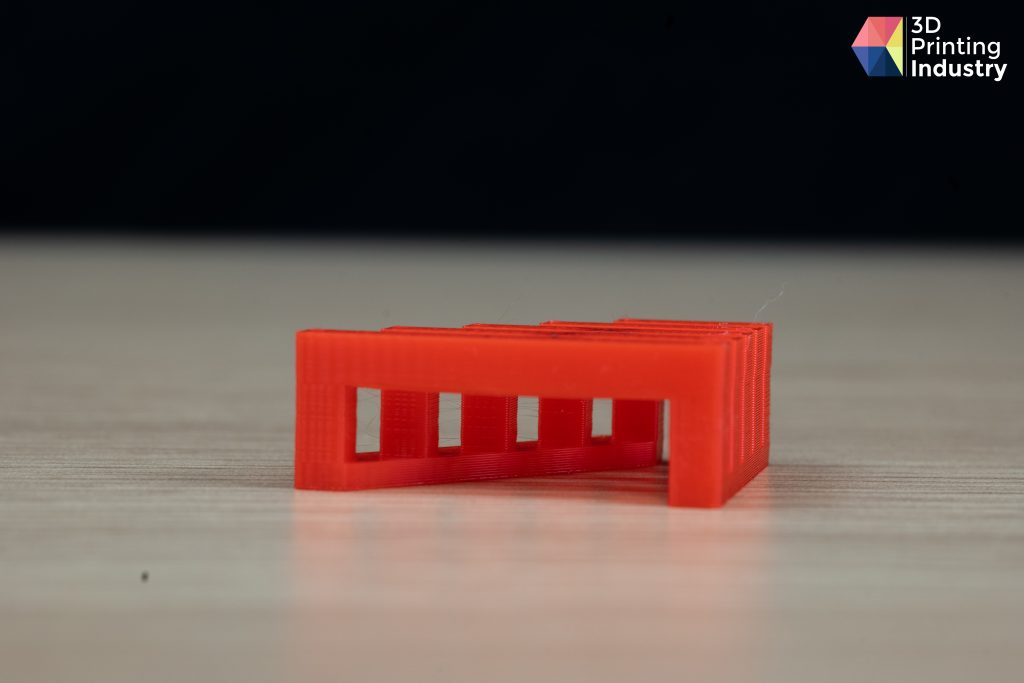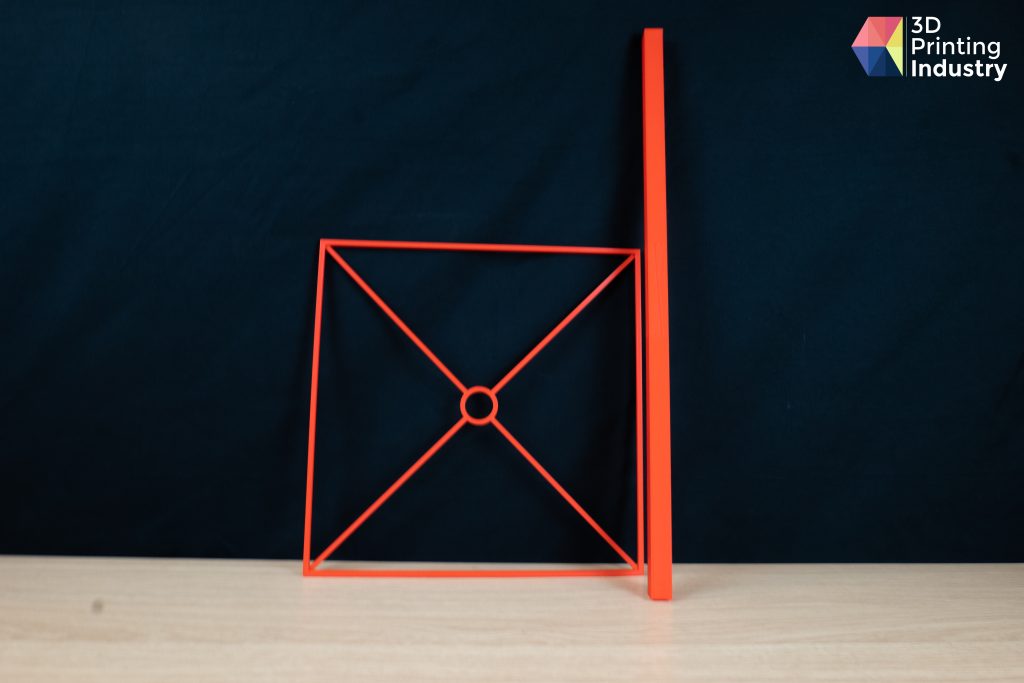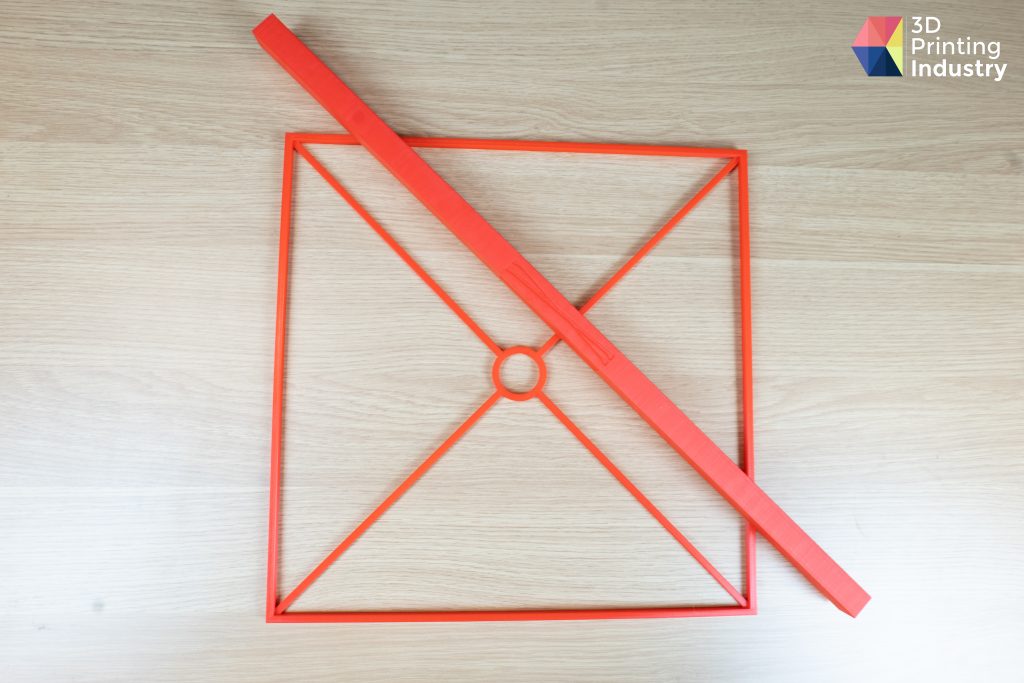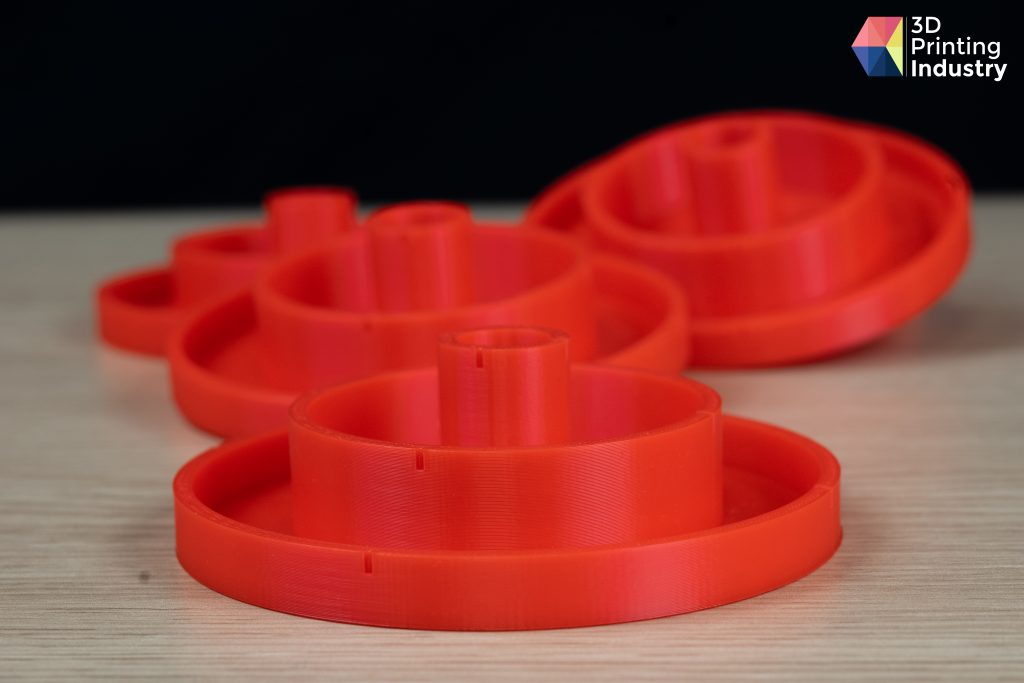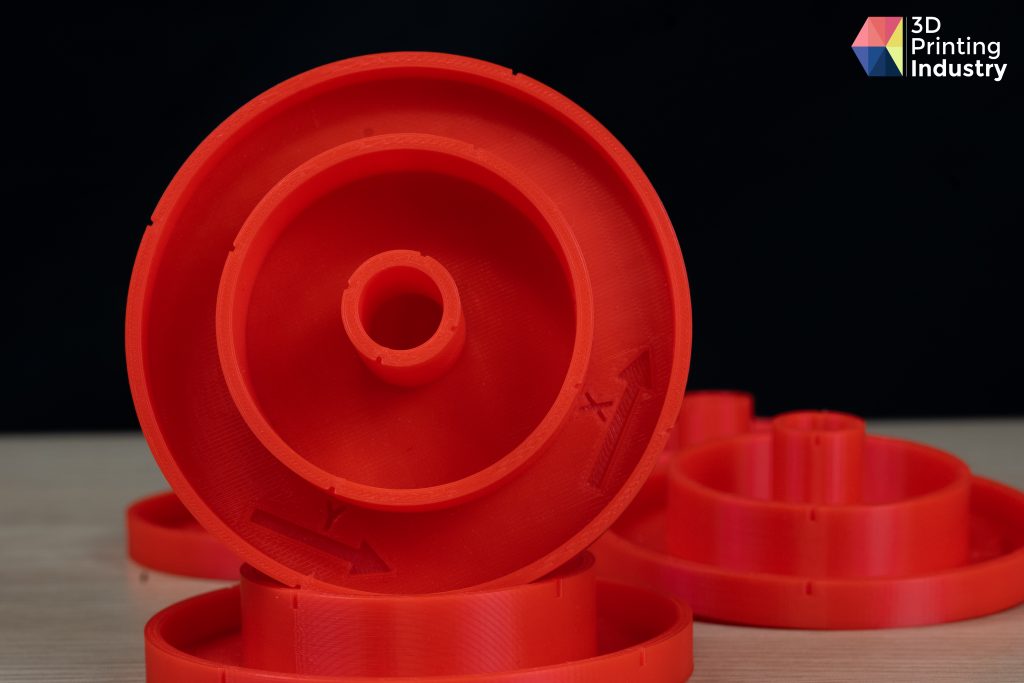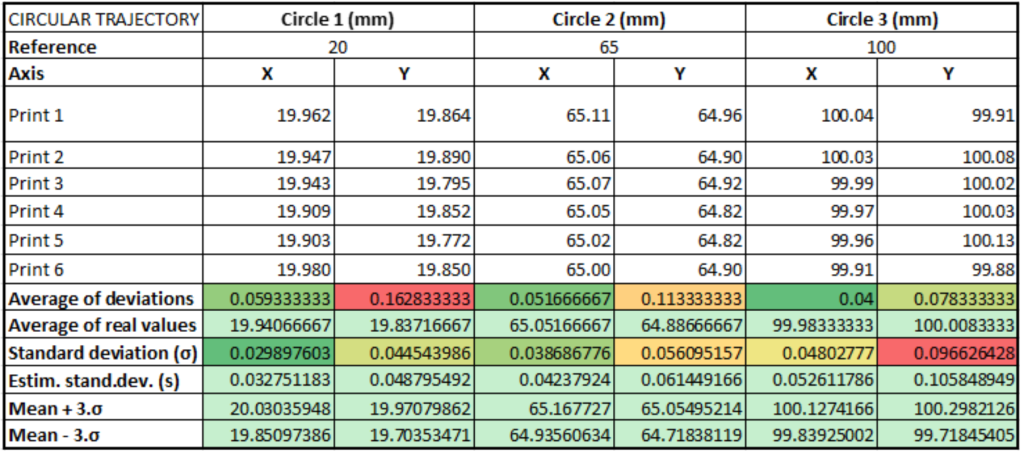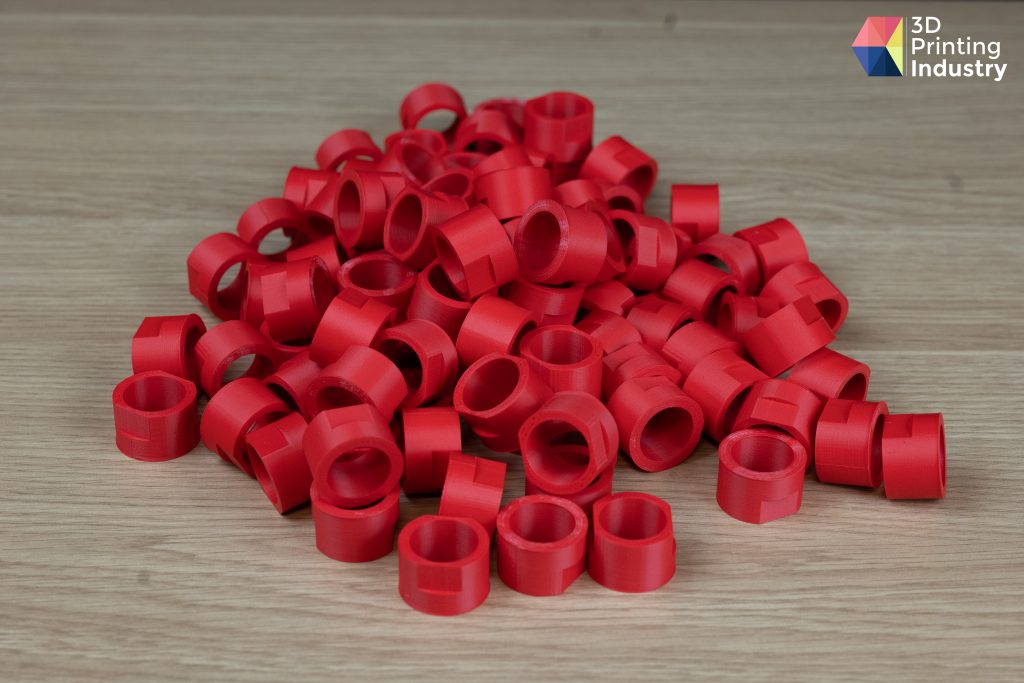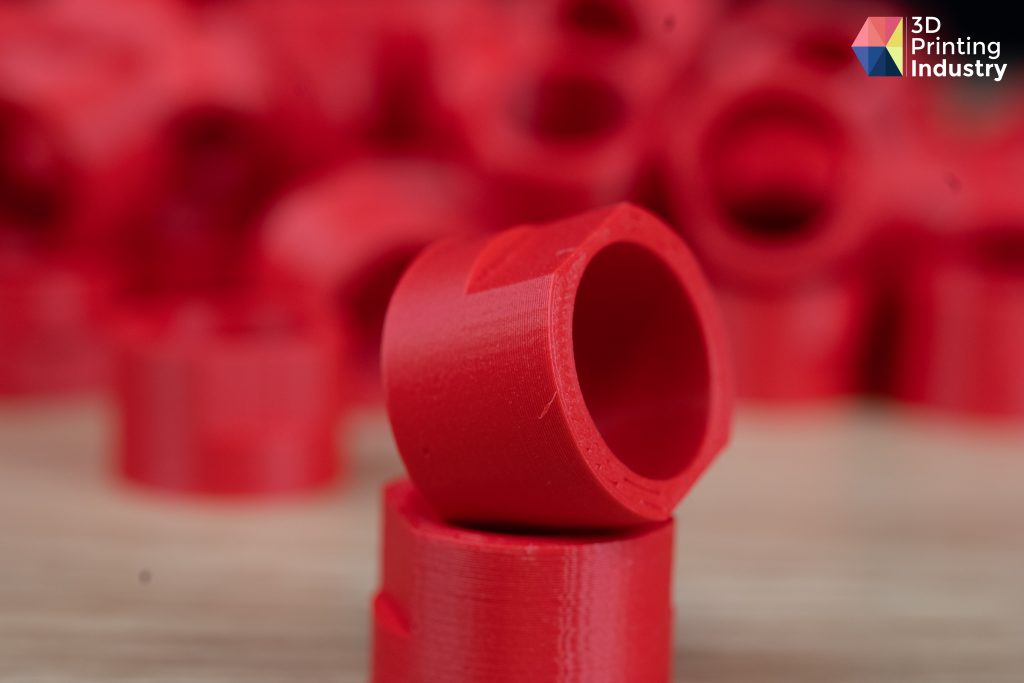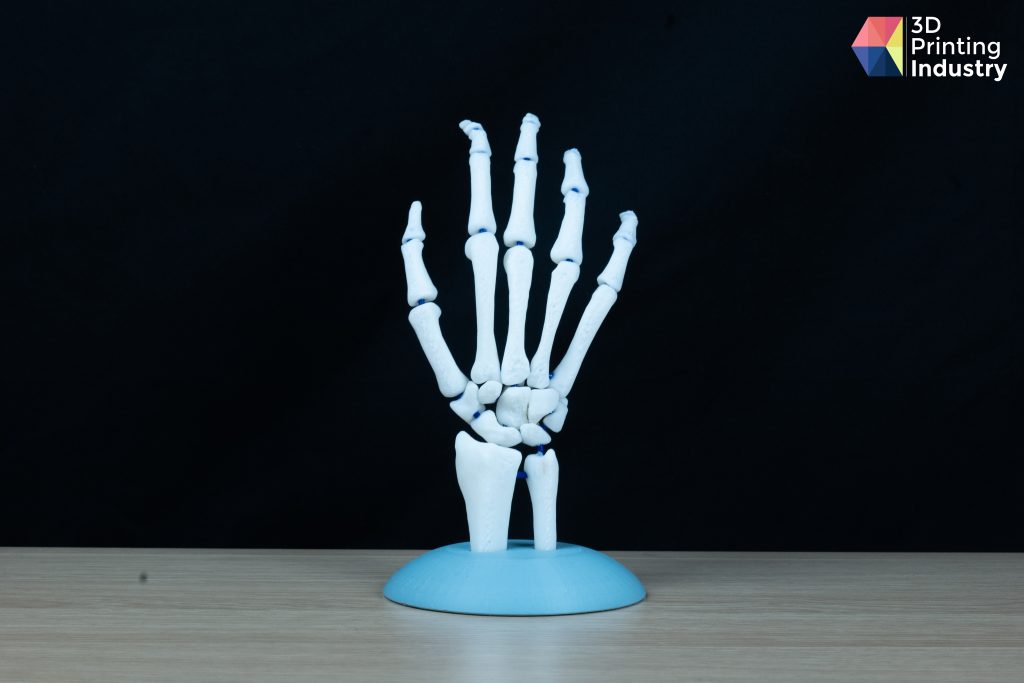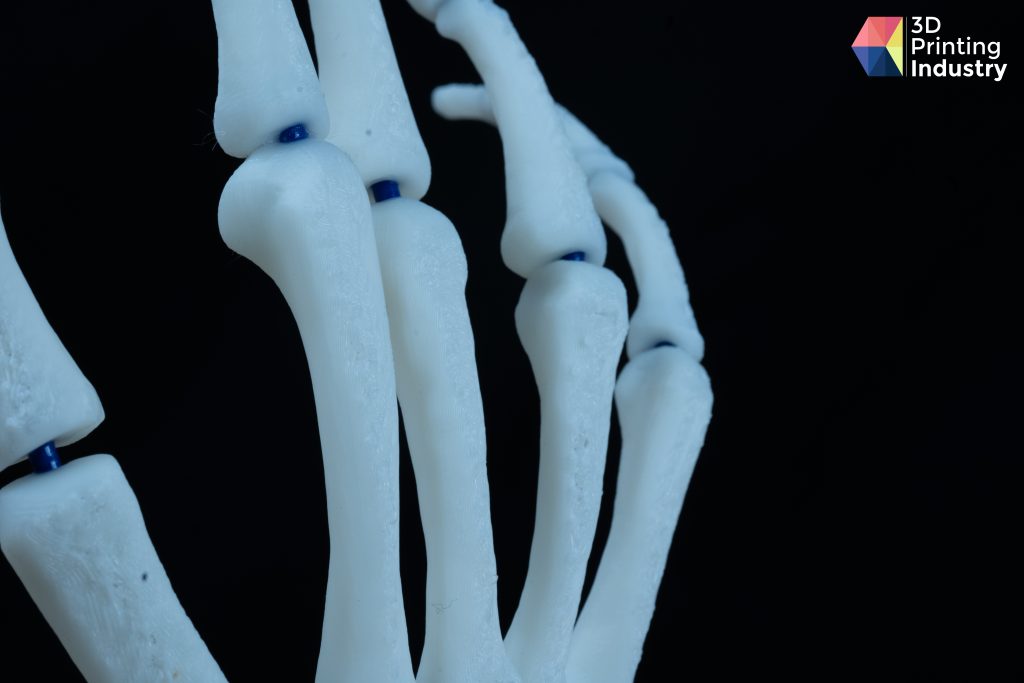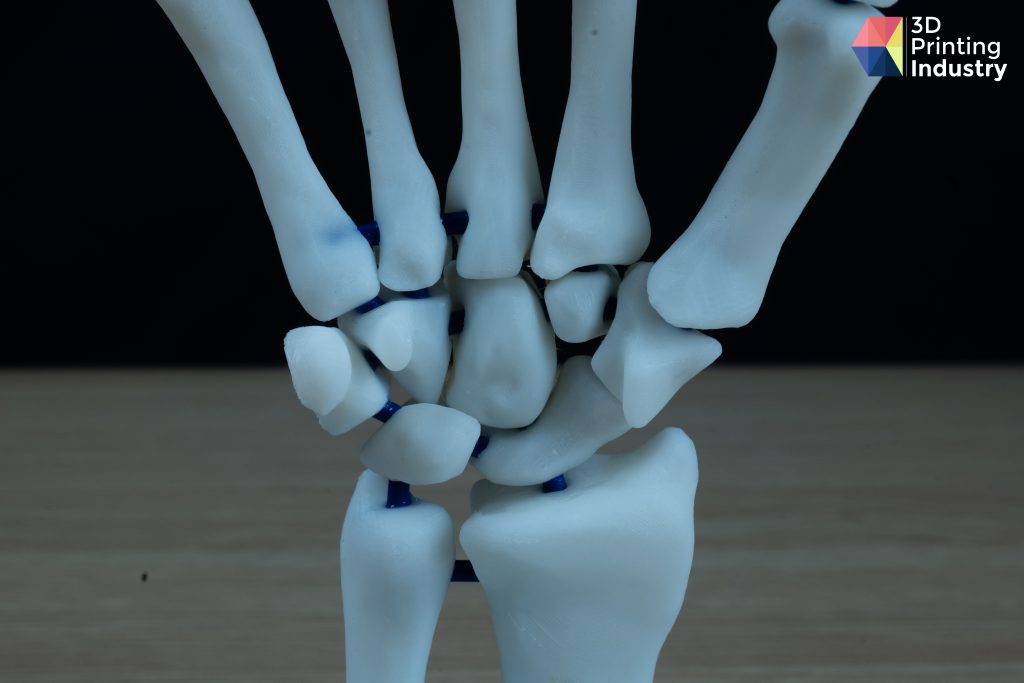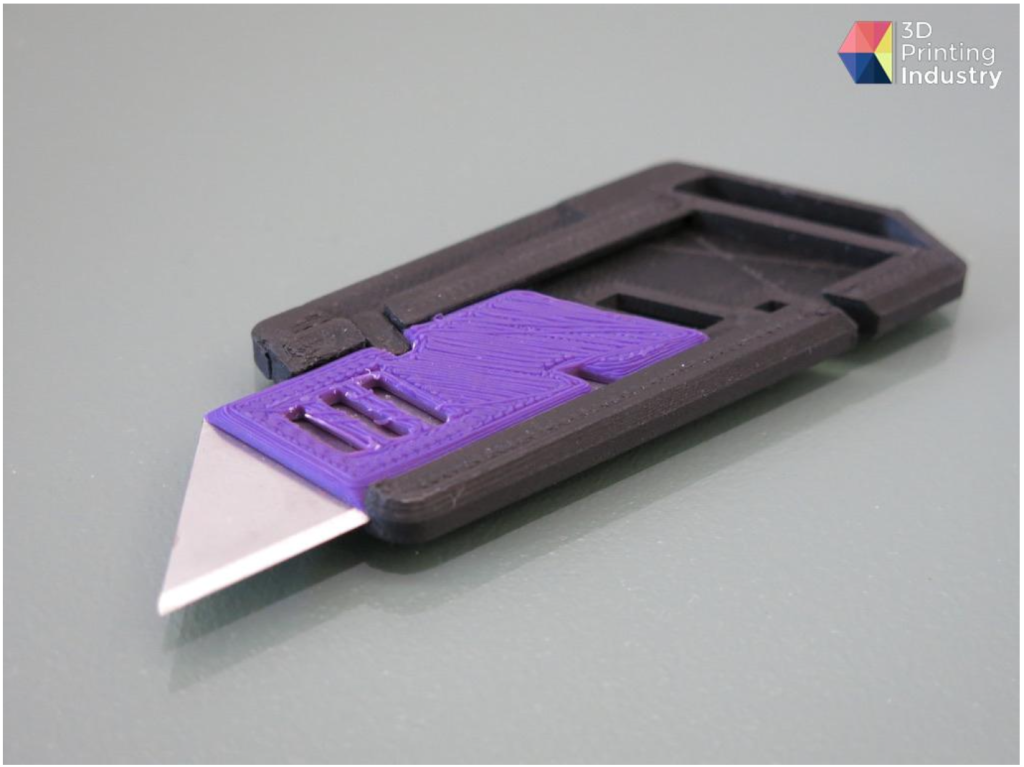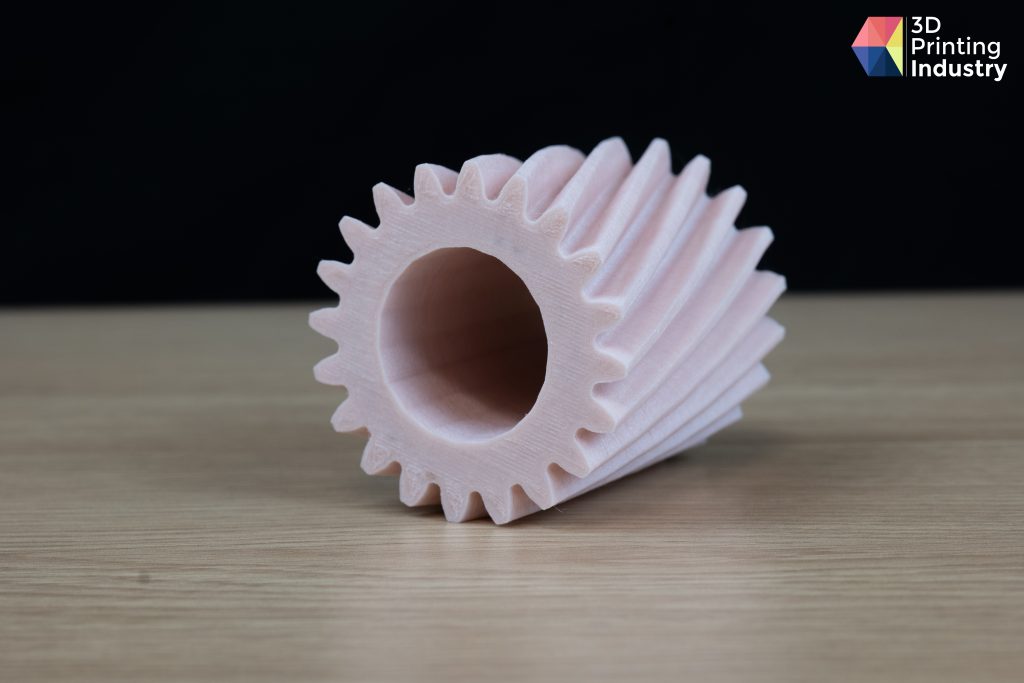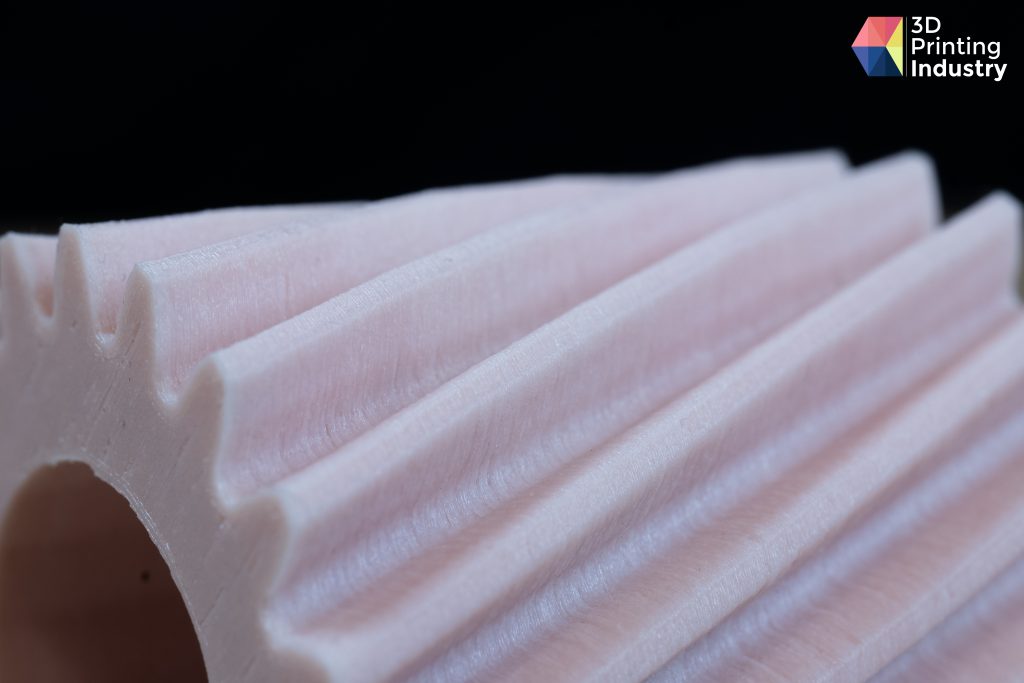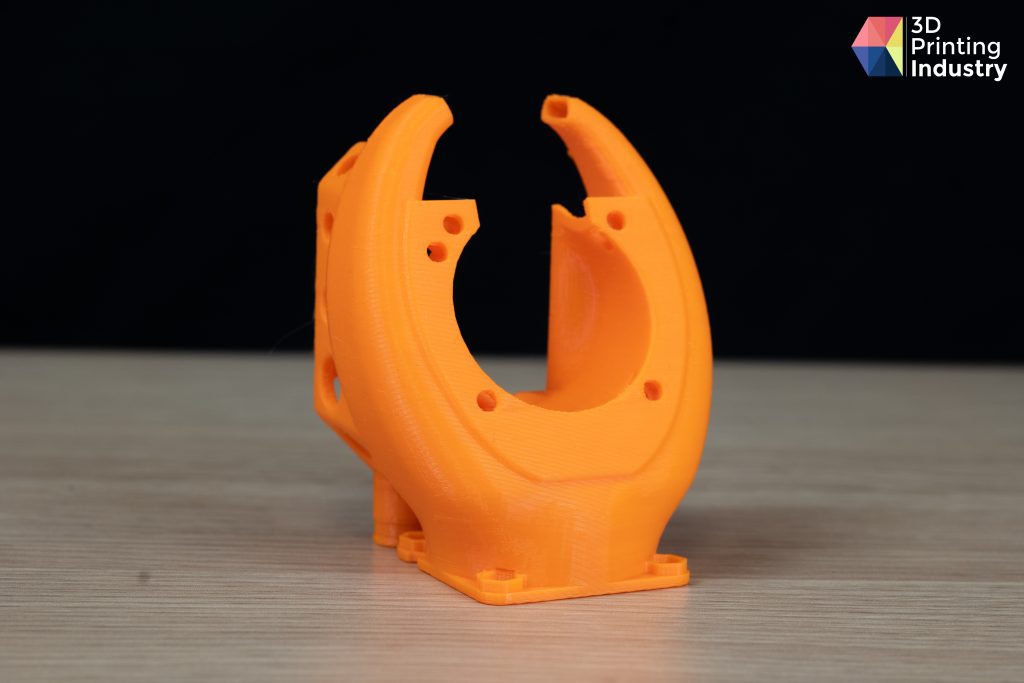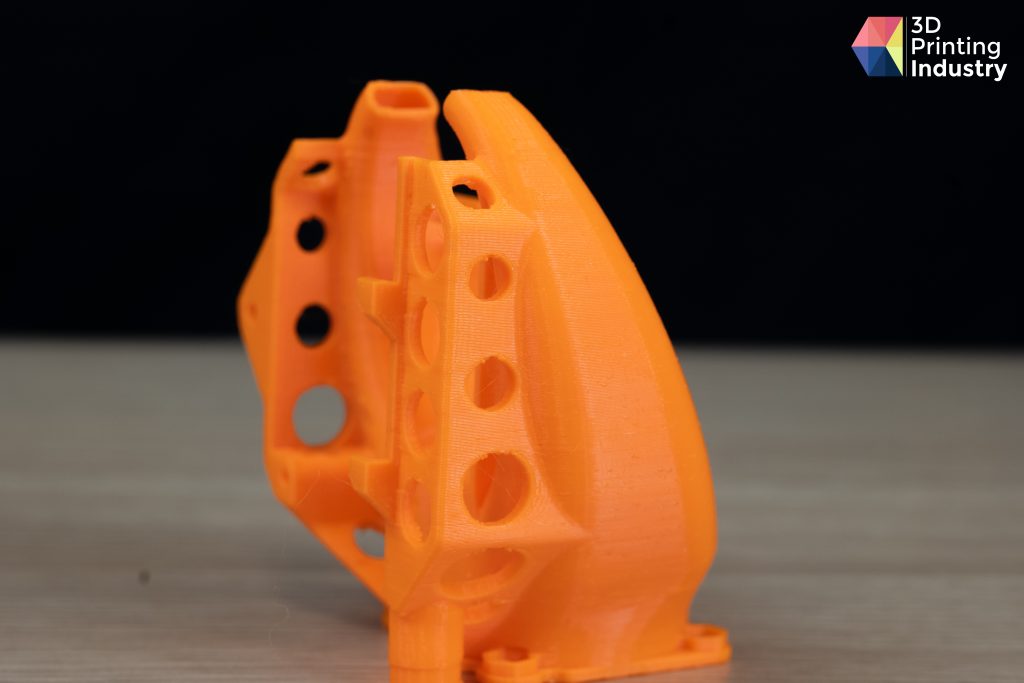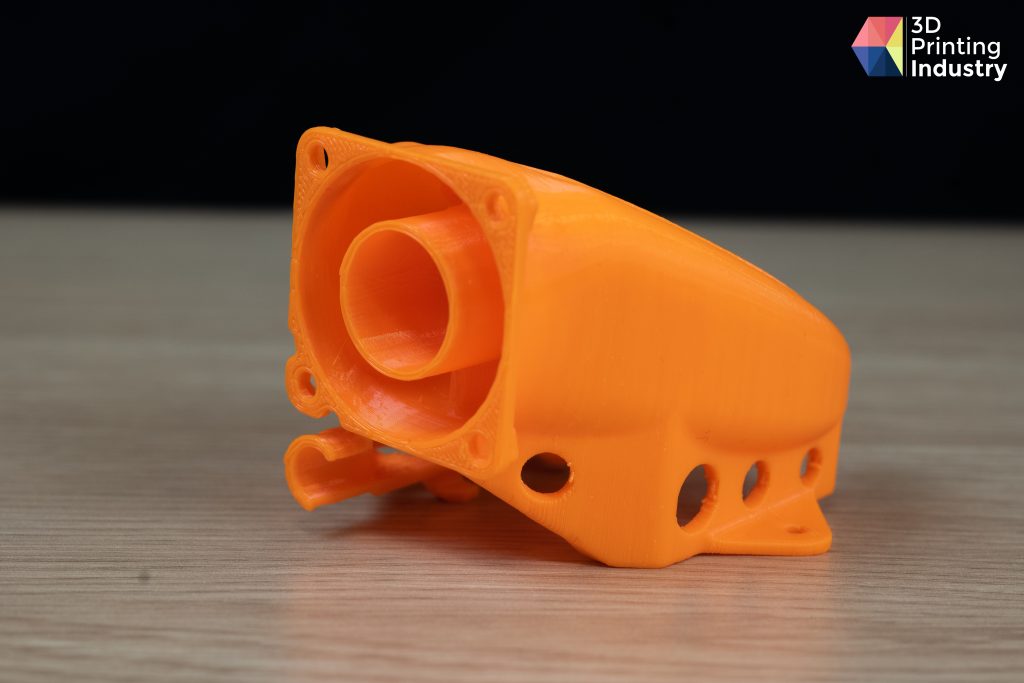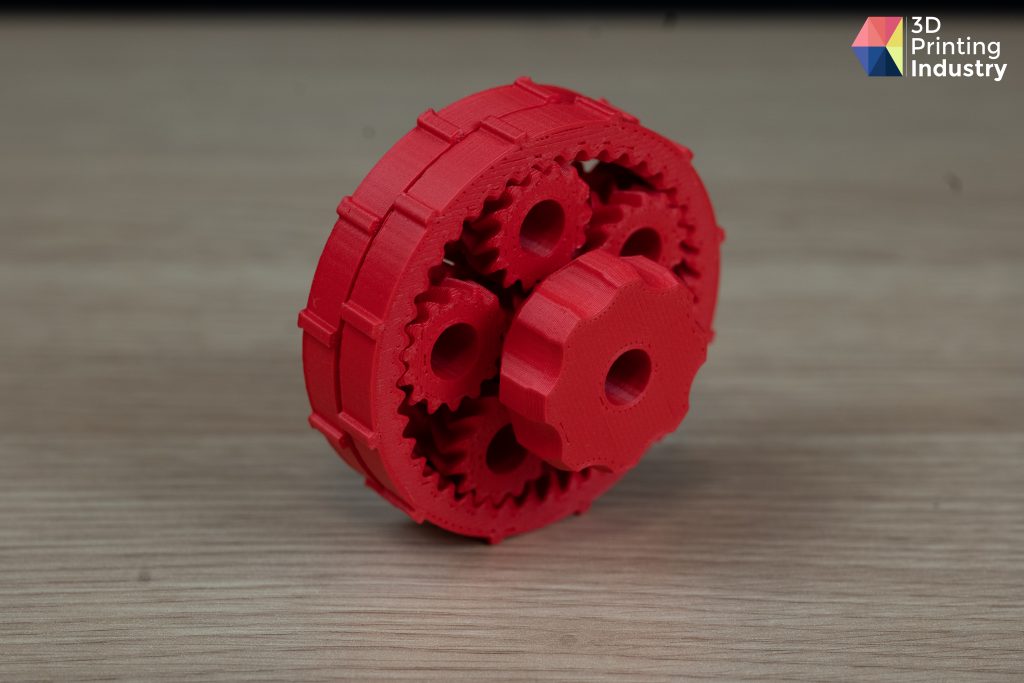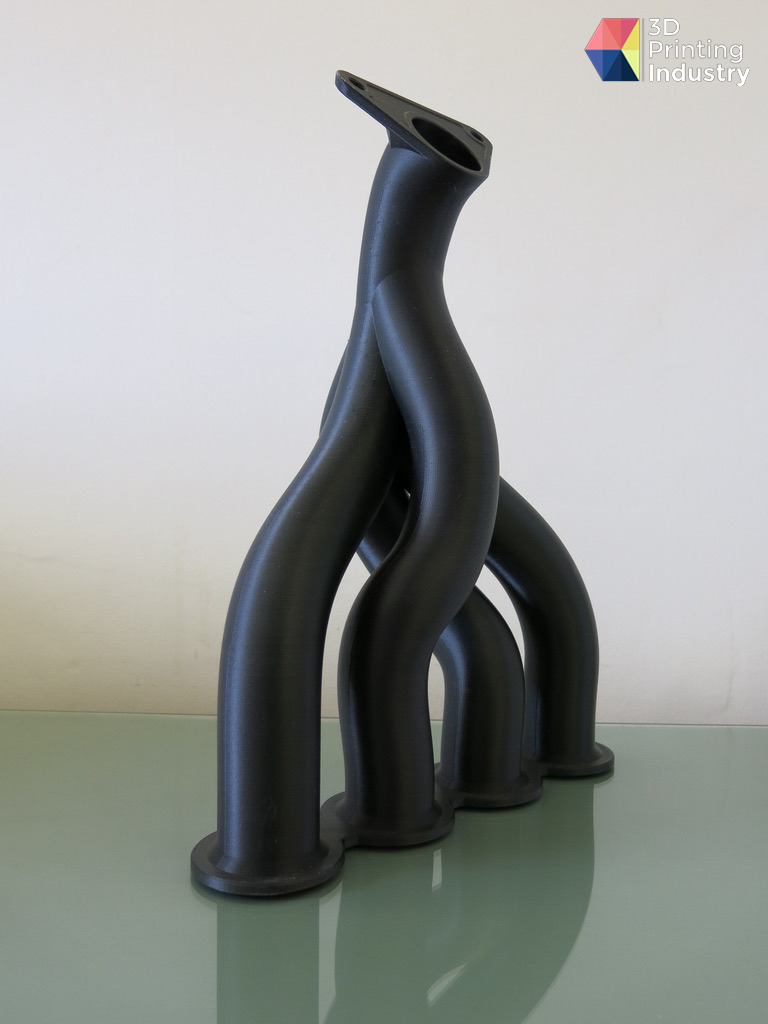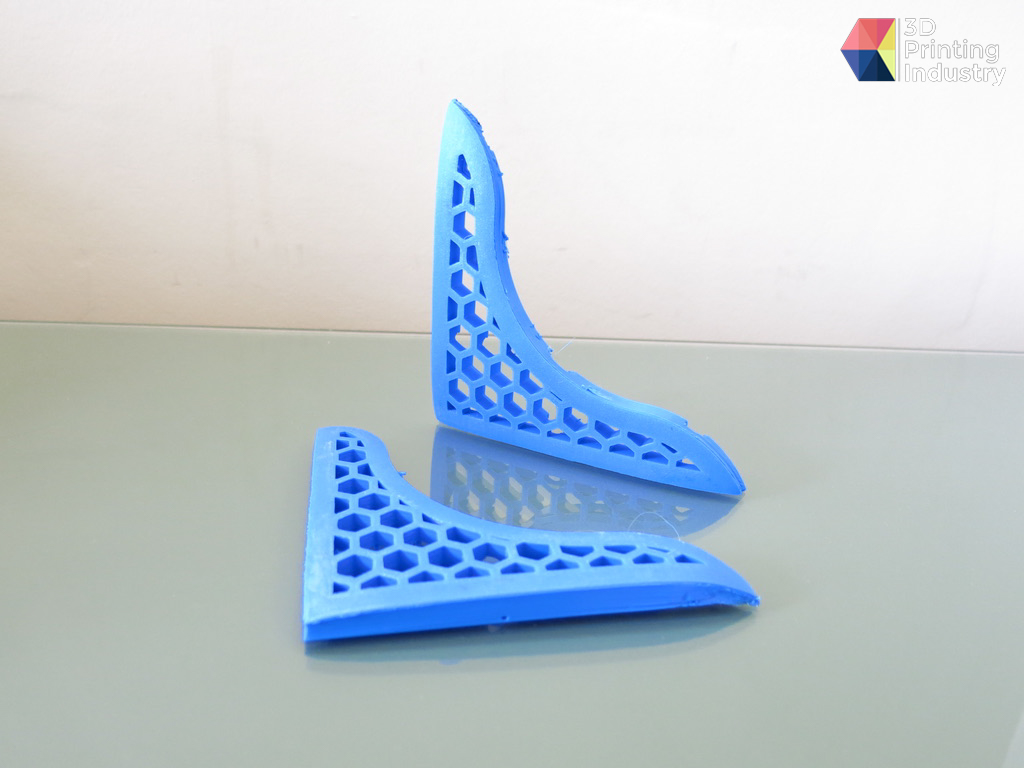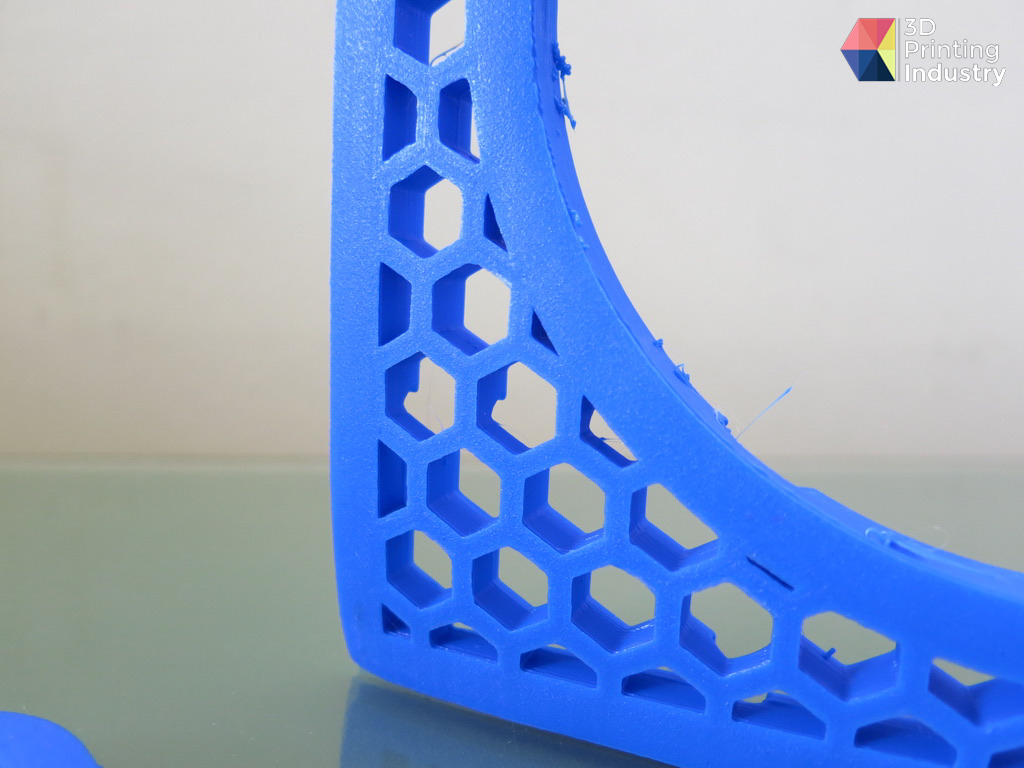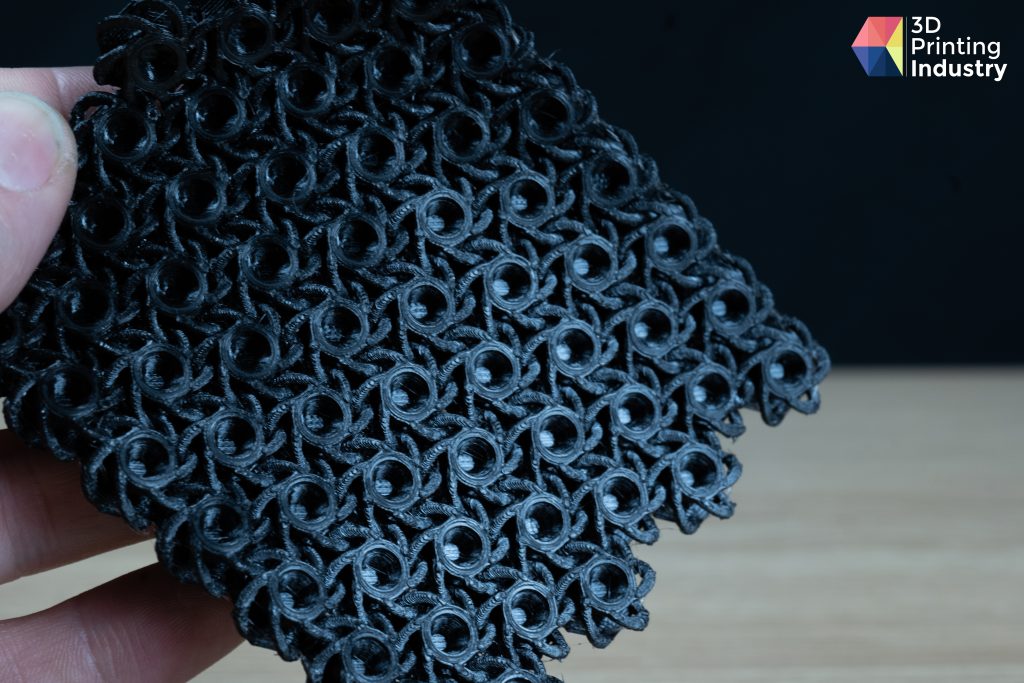Our engineering team recently reviewed the Flashforge Guider 3 Plus. Based in China, Flashforge was founded in 2011 and has since built up a global distributor network. This review of the Guider 3 Plus, covers their professional grade FFF 3D printer released in October 2022 that incorporates a CoreXY axis system for high-speed, high-quality printing.
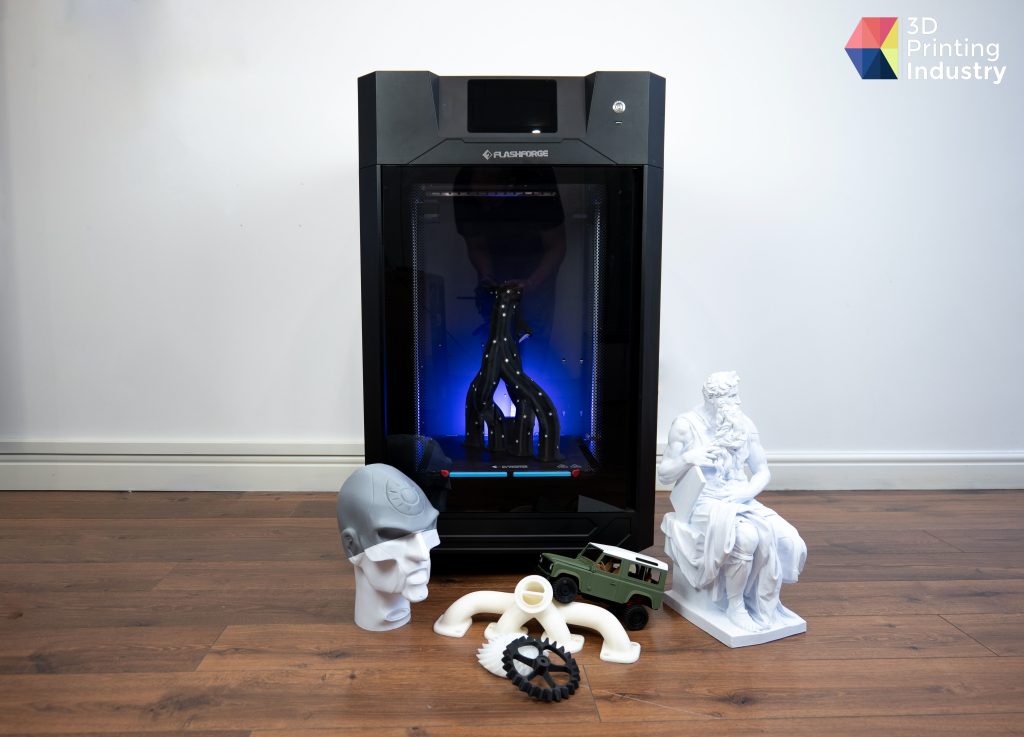
Target market for the Guider 3 Plus 3D printer
The Guider 3 Plus is targeted towards professional, industrial scale applications. Flashforge advertises the machine as being “the professionals first choice,” highlighting small businesses, studios, universities, and laboratories as the key customer bases.
The 3D printer is especially well suited to prototyping large-scale models and engineering parts. Flashforge points to architectural parts, product development verification, jigs, fixtures, and assembly line parts as key use areas.
Unboxing and kit contents
The 3D printer was very well packaged, arriving in perfect condition. The package also contained a number of accessories, including 1kg of PLA, heat-resistant gloves, tools for printer maintenance, a USB stick, a leveling card, and a printbed scraper.
The internal packaging and kit contents of the Guider 3 Plus. Photos by 3D Printing Industry.
Hardware
The Guider 3 has a full metal chassis and is a fully enclosed machine. This allows for the 3D printing of complex materials that require specific build environments and temperatures.
The 3D printer’s CoreXY architecture is key, enabling more rigid, accurate, and faster results than a traditional cartesian system. Two stepper motors control the X and Y axes, while the Z-axis manages the bed via two large ball screws and four guidance rails. This keeps the bed level and ensures accurate movement.
The 3D printer can also fit through a standard door frame, making it well suited to small businesses with limited space. The 3D printer also includes legs and wheels, optimized for maneuverability around a factory floor.
The hotend comes equipped with many aftermarket parts, such as a leveling sensor and four fans stationed around the nozzle to reduce heat creep and funnel air underneath the nozzle to aid with overhang printing.
The Guider 3 Plus extruder. Photo by 3D Printing Industry.
The Guider 3 Plus incorporates a heated print bed capable of reaching temperatures of up to 120 °C. The print bed offers fast heating times and quick cooldowns, helping to conserve power. The build plate is also flexible, allowing for the easy detachment of parts.
The Guider 3 Plus’s build plate and print bed. Photo by 3D Printing Industry.
A 7-inch full-color multilingual touch screen is located at the front of the printer. Intuitive and easy to use, the location of the user interface makes it convenient for industrial configurations.
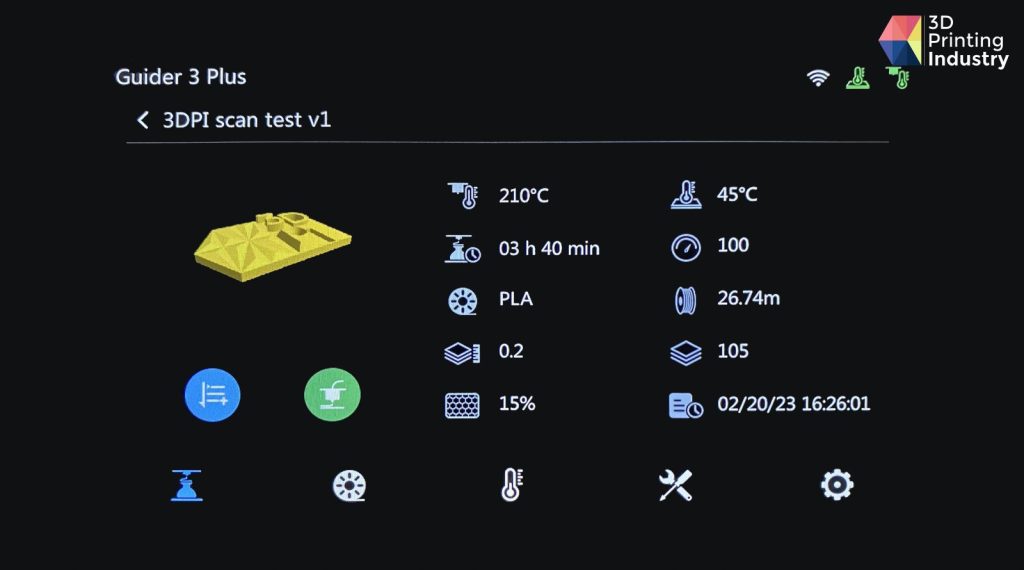
Software/Slicer
Flashforge provides its own slicer software, FlashPrint 5. The software offers a number of features, including dimensional compensation, treelike supports, and model cutting. This is one of the most straightforward and easy to use slicers that we have encountered, with only a few buttons and no extra settings within the basic mode.
FlashPrint 5 also includes an “Expert Mode,” which offers more advanced options, such as the ability to save profiles and configurations once the perfect profile is found.
Benchmarking test
We first 3D printed the test file provided with the machine. These 3D prints are generally fully optimized for the printer, and a failed result here would raise serious alarm bells for the quality of the printer. In this case, the 3D print came out perfectly.
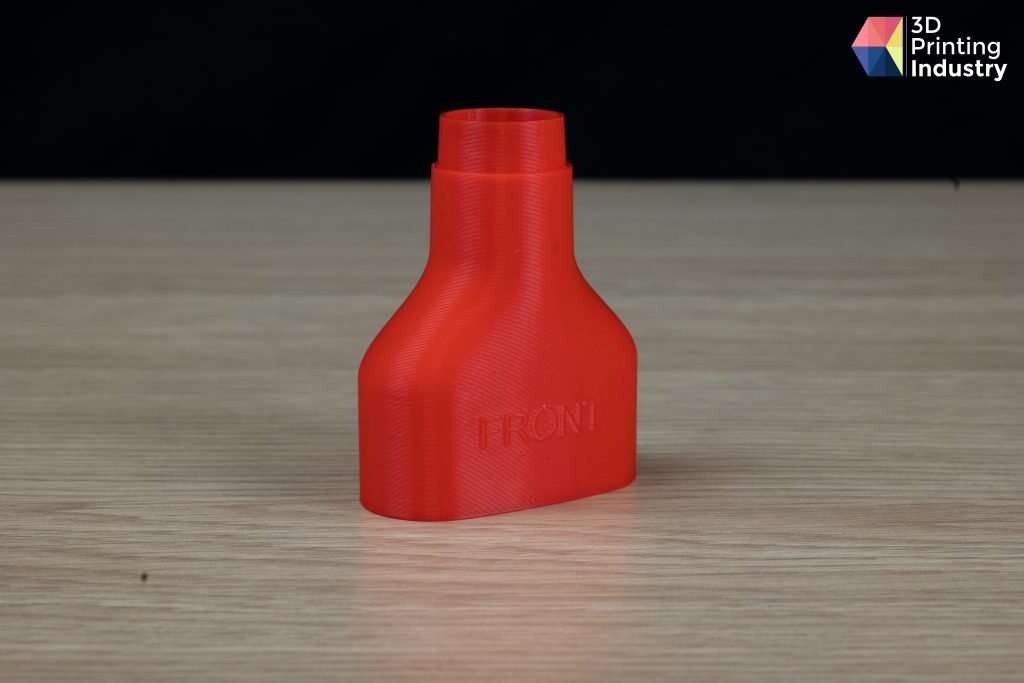
Next we conducted a 3D Benchy, which was measured and compared to the original model to test the machine’s accuracy. The average deviation between the measurements and reference was 0.13mm, a solid result that is better than the average score of 0.15mm from our other Benchy tests.
Bench 3D printed using the Guider 3 Plus. Photo’s by 3D Printing Industry.
We next conducted a repeatability test of 3 different parts (square, hexagon, and tube shapes), which were printed multiple times, measured, and compared to the original part dimensions. An average deviation of less than 0.1mm, and a standard deviation under 0.05mm, can be seen as a successful result.
Square repeatability test pieces. Photos by 3D Printing Industry.
The average deviation for the square test pieces came in at 0.0789mm, and the standard deviation at 0.0339mm. The length measurements, however, presented some clear inaccuracies, with an average deviation of 0.108mm.
Square repeatability test data. Images by 3D Printing Industry.
The hexagon tests showed average deviations of 0.0568mm, and a standard deviation of 0.052mm. The length measurements again highlighted problems, with an average deviation of 0.085mm. This suggests that the Z-axis is more accurate than the XY-axis, potentially attributable to belt tension.
Hexagon repeatability test pieces and results. Photos and Images by 3D Printing Industry.
The tube parts produced an average deviation of 0.0870mm, and a standard deviation of 0.0729mm. The average result of the external diameter was 19.958mm, compared to the target diameter of 20mm. This was more in-keeping with what we expect from a CoreXY machine.
Tube repeatability test pieces and results. Photos and Images by 3D Printing Industry.
We next conducted a bridge test to determine whether the machine could handle 3D prints without supports. All parts printed successfully, with quality remaining strong until the 40mm length bridge.
Guider 3 Plus bridge test pieces. Photos by 3D Printing Industry.
We followed the bridge test with a tower and width test. Overall, the tower part 3D printed very well, achieving a size of 19.99 mm x 20.06 mm x 599 mm. The width test also printed without any issues, perfectly meeting the machine’s advertised build dimensions of 350x350mm.
Guider 3 Plus tower and width test. Photo by 3D Printing Industry.
We also conducted a circular trajectory test, assessing the machine’s ability to produce parts with circular sections.
Guider 3 Plus circular trajectory test pieces. Photo by 3D Printing Industry.
However, the Y-axis consistently provided less accurate results. This is something we wouldn’t expect from a CoreXY system, and could have been caused by one of the stepper motors being less in tune with the other.
Circular trajectory test results. Images by 3D Printing Industry.
Next, we tested for ‘capability.’ Here, the suitability of the machine to produce parts within the tolerance range mentioned in the specifications was assessed. We printed the same model 150 times. 16 were then taken at random, and measured three times to calculate their deviations.
Capability test pieces. Photos by 3D Printing Industry.
The Guider 3 Plus achieved a process capability (cp) of 1.84 and a minimum process capability index (cpk) score of 1.180. These are good scores, confirming that this machine is both precise and accurate.
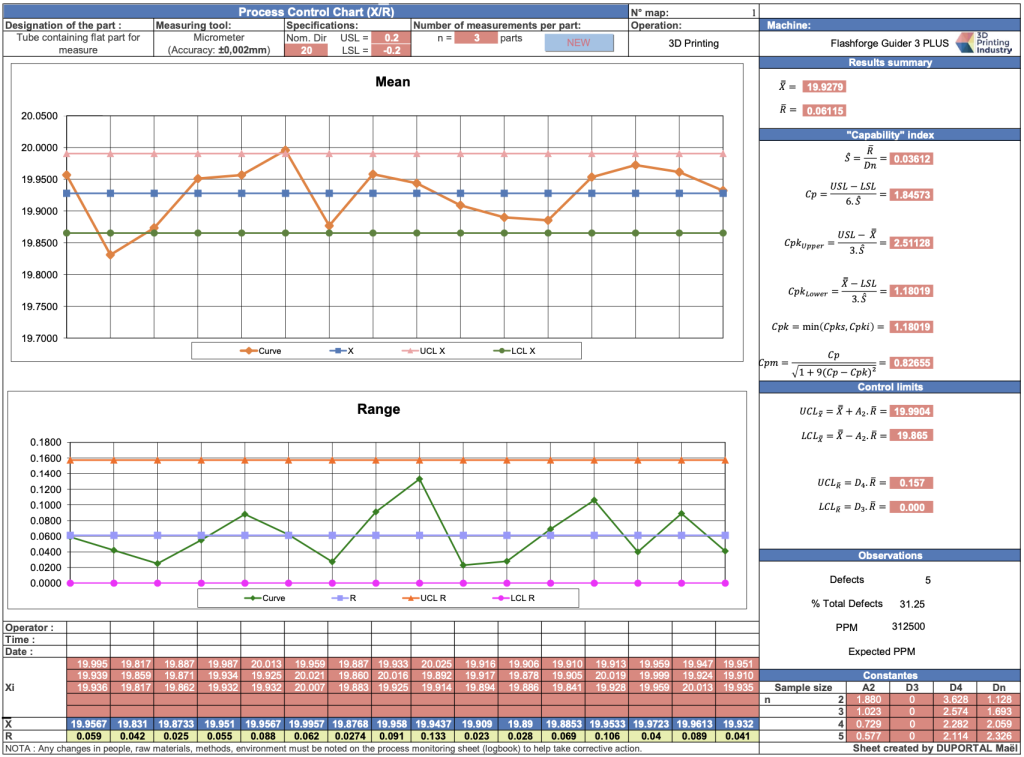
Application tests
We first 3D printed an anatomical model to assess the machine’s ability to print ABS using tree supports. The pieces printed quickly and accurately. However, the tree supports were not as good as other systems we have tested.
Anatomical model 3D printed with the Guider 3 Plus. Photos by 3D Printing Industry.
We then used PA12-CF material to 3D print both a small utility knife case and a helical gear. Again, the printer performed well, producing good quality parts.
3D printed utility knife case and helical gear. Photos by 3D Printing Industry.
To test the 3D printer’s capability of working with high heat tolerances we used PETG to 3D print a fan mount for the Ender 3 v2 printer. The quality here was impressive, with no stringing or overhang warping.
PETG fan mount 3D printed with the Guider 3 Plus. Photos by 3D Printing Industry.
We also used PLA to print a planetary gear system, and a prototype model of an engine manifold. The planetary gear mechanism worked perfectly, indicating high print accuracy.
PLA planetary gear system and engine manifold prototype. Photos by 3D Printing Industry.
We next used Nylon to produce a shelf bracket. Here, we encountered some adhesion issues. Flashforge recommends a printing temperature of 60-70℃, suggesting that our print bed temperature of 80℃ may have contributed to this failure.
3D printed nylon shelf brackets. Photos by 3D Printing Industry.
Finally, we 3D printed Ryno Pro Series Nasa Fabric, a very intricate model and a good test of the accuracy of the printer. This part printed well, despite some limited stringing.
3D printed Ryno Pro Series Nasa Fabric. Photos by 3D Printing Industry.
Final verdict
Overall, we view the Guider 3 Plus as a quality 3D printer that fits the bill perfectly for professional and industrial users requiring a large build volume.
The 3D printer offers high quality hardware, with a full metal chassis, two large ball screws, and four sturdy guidance rails. The high temperature print bed can heat up to 120℃, with the fast heating times and quick cooldowns helping to conserve power. The build plate is safely secured by in-built magnets during 3D printing, and is flexible for the easy removal of parts.
The CoreXY architecture allows for fast printing speeds of up to 250mm/s, a 50% increase on the previous Guider 2 model. This architecture also ensures that good print quality is maintained throughout the 3D printing process since there is less weight and inertia at the print head, reducing the effects of ghosting and ringing caused by vibration.
The Guider 3 Plus’s substantial Z-axis build height of 600mm is particularly impressive, marking a significant upgrade on the Guider 3’s 340mm height. Additionally, the 3D printer is compatible with a wide range of 3rd party engineering grade filaments, with the 320℃ high temperature extruder allowing for greater material freedom.
The 7-inch full-color touch screen is especially easy to use, and the option of WiFi connectivity is a nice touch for those looking to run this on a network. Moreover, the addition of internal cameras allows for remote build monitoring.
Throughout our application tests, the 3D printer really highlighted its versatility, producing good quality, accurate parts in a range of materials.
Overall, with regard to our capability testing, the Guider 3 Plus performed well and passed most of our tests, with only a couple of issues encountered with regard to circular trajectory and repeatability.
The circular trajectory issues were likely caused by stepper motor inaccuracies, however the machine still provided above average results overall. Repeatability testing highlighted some Y-plane inaccuracies, but these are rectifiable and likely attributable to either belt tension or jolts caused by the high print speeds. Our capability test highlighted the high accuracy and precision offered by this machine. This indicates that the Guider 3 Plus is fit for purpose when 3D printing complex and detailed parts in a professional setting.
The Guider 3 Plus is ideal for professional, industrial scale applications, and is optimized for use on the factory floor. For instance, the 3D printer’s small footprint makes it perfect for use in workshops of all sizes while still maintaining a substantial build volume. The addition of lockable swivel caster wheels make the printer easily maneuverable, and can keep it firmly located.
The substantial build volume and fast print speed make it a versatile system great for industrial prototyping or tooling. Equally, with high build quality, the Guider 3 Plus is suitable for producing end-use parts.
Ultimately, this 3D printer has high potential in the professional and industrial markets. We believe that the Guider 3 Plus meets the high standards that we have come to expect from Flashforge.
Technical specifications
| Architecture | CoreXY |
| Build volume | 350x350x600mm |
| Max build speed | 250mm/s |
| Max nozzle temperature | 320℃ |
| Max bed temperature | 120℃ |
| Material compatibility | PLA, ABS, HIPS, PC, TPE, PETG, ASA, PP, Nylon, and Composite/Reinforced |
| 3rd party material compatible | Yes |
| Slicer | FlashPrint 5 |
| HEPA 13 filter | Yes |
| Connectivity | Wi-Fi, Ethernet |
Subscribe to the 3D Printing Industry newsletter to ensure you keep up with the latest 3D printing news. You can also follow us on Twitter, like our Facebook page, and subscribe to the 3D Printing Industry Youtube channel to access more exclusive content.
Are you interested in working in the additive manufacturing industry? Visit 3D Printing Jobs to view a selection of available roles and kickstart your career.
Featured image shows the Flahforge Guider 3 Plus. Photo by 3D Printing Industry.




